How to Backup Deleted Files in Windows 10
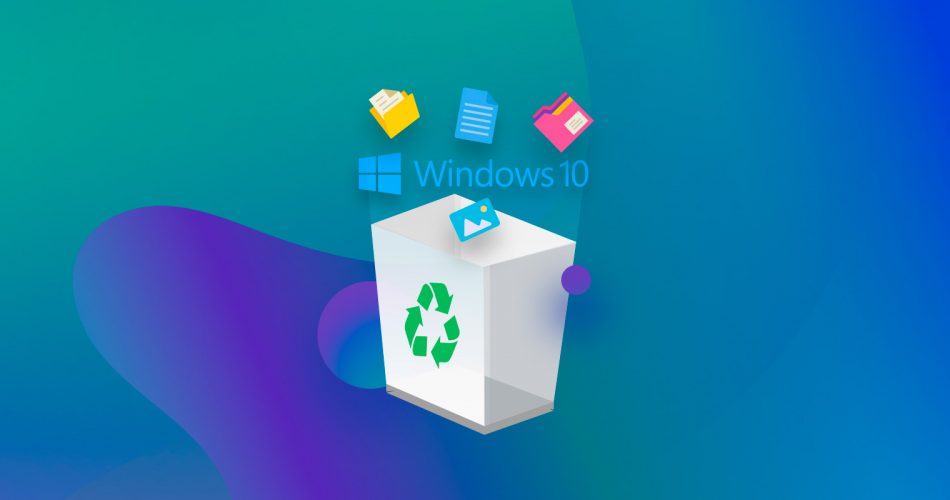
This article details eight tried-and-tested methods to recover deleted files on Windows 10. It's almost guaranteed that at least one of those methods will help you get your data back. See the Quick Navigation section below for an overview of common data loss situations and applicable recovery methods.
Jump to:
- Undelete Files on Windows 10 Using Third-party Data Recovery Software
- Pull Windows 10 Lost Data Out Of (File) History
Losing your precious data is easy. One absent-minded click and your files will be gone quicker than a coin in a magic trick. Thankfully, there are several ways to restore deleted files on Windows 10. It's almost guaranteed that at least one of those methods will help you get your data back.
If you deleted your files and don't have backups available, you should avoid actively using your computer. Your files' recovery should be your immediate next move to minimize the chances of newer data overwriting them.
Quick Navigation
| Problem | Solution |
|---|---|
| I just deleted a file accidentally. Can I undo my action? | Look in the Bin Quick Auto-Rescue from the Bin with CTRL+Z |
| I've permanently deleted a file – manually removed it from the Recycle Bin. Can I still get it back? | Software to the Rescue There's an App for That – Windows File Recovery Backup and Restore - In Windows 10 |
| I clicked something in Explorer, and my files disappeared. How do I get them back? | Look in the Bin Hidden Files, Garbled Filesystems Software to the Rescue |
| My computer is slow and my files disappeared/are inaccessible | Hidden Files, Garbled Filesystems |
| I made changes to a file and saved it. Can I somehow undo them? | There's an App for That – Windows File Recovery History Trip Backup and Restore - In Windows 10 |
| A secondary storage device with all my work files disappeared! | Hidden Files, Garbled Filesystems There's an App for That – Windows File Recovery Software to the Rescue Backup and Restore - In Windows 10 System Image File Extraction |
| My computer won't boot. The OS and files are inaccessible. | Backup and Restore - In Windows 10 System Image File Extraction |
| I formatted an HDD but forgot to backup my files! What now? | Software to the Rescue Backup and Restore - In Windows 10 System Image File Extraction |
8 Best Methods to Recover Deleted Files on Windows 10
There are many ways to recover permanently deleted files on Windows 10, and a lot of them rely on various types of backups. In this guide, we will see how you can set them up and recover your deleted files from Windows 10 with and without them.
Method #1: Restore Deleted Files From the Windows 10 Recycle Bin
Most users delete files by selecting them and then either right-clicking and choosing Delete or hitting Delete on the keyboard. On modern operating systems like Windows 10, this doesn't erase a file. It moves it to the Recycle Bin. If you act immediately, undoing that mistake can be easy.
- Open the recycle bin. You can do it by either right-clicking on its icon and choosing that option (open) or double-clicking on it.
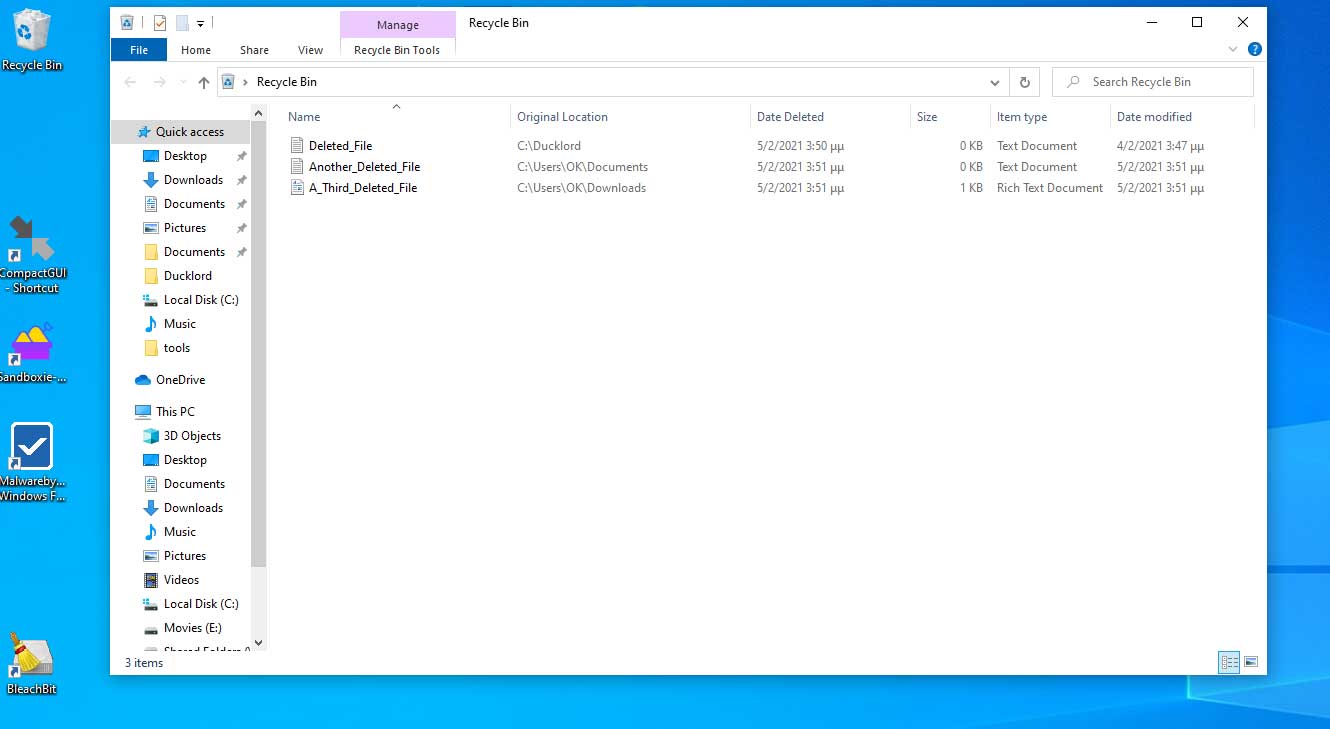
- Locate the file you want to save from its impending deletion.
- Right-click on it and choose Restore from the pop-up menu that appears.
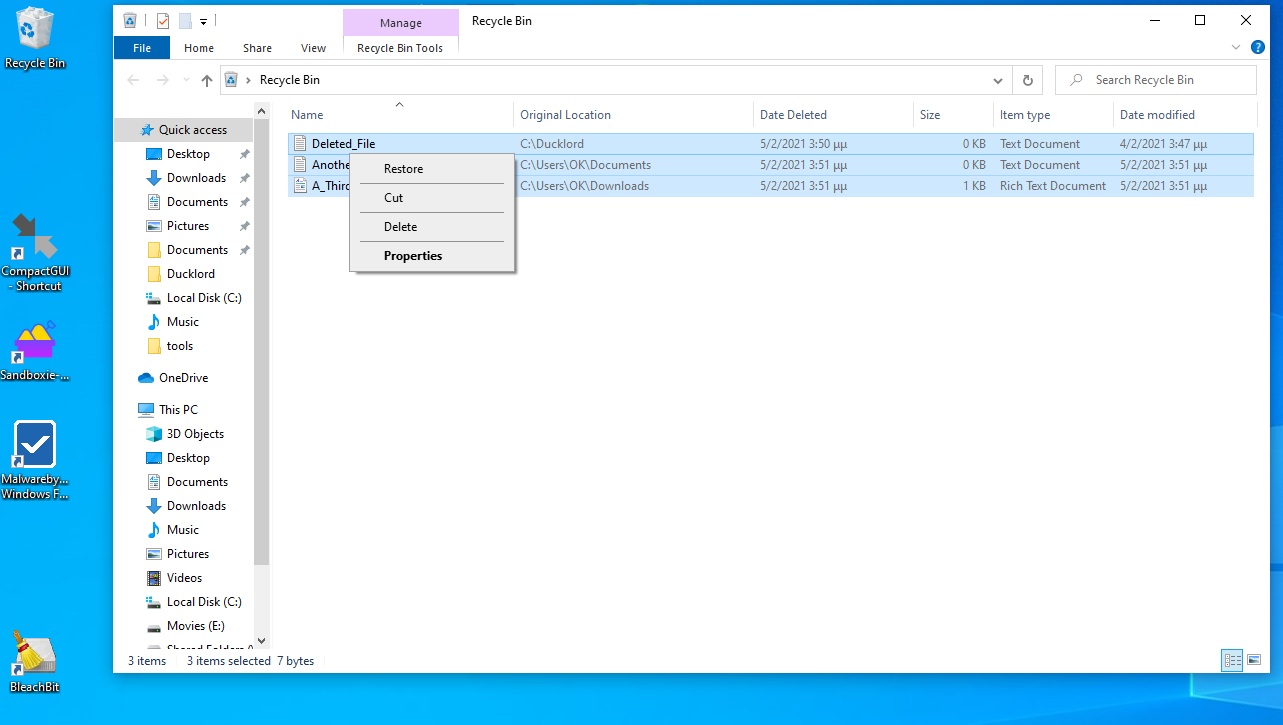
To restore multiple files, keep CTRL or Shift pressed on your keyboard while clicking on them.
After that, your files will move from the Recycle Bin back to their original location.
Method #2: Quickly Auto-Recover Deleted Files From Windows 10's Recycle Bin With CTRL+Z
There's an even easier way to get your files back from the Recycle Bin than the process above. However, you should only use it right after deleting a file, and only if:
- You are still in the Windows Explorer window from where you deleted the file.
- You are absolutely sure it was moved to the recycle bin.
To get your file back, press CTRL + Z, and hey presto, it will be back where it originally was. At least, theoretically.
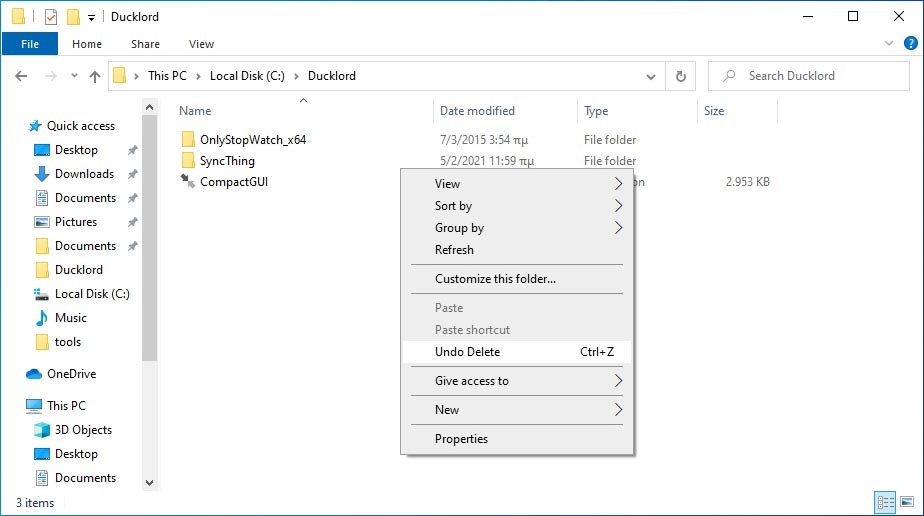
Practically, this isn't some magical shortcut that brings files back from the dead, but a command to undo your last action. In Windows from Build 19041/Version 2004 onward, Microsoft decided to present it as a file-saving solution. If you right-click on a blank spot of the Windows Explorer window from where you deleted a file, you'll see the option to Undo Delete on the menu that pops up.
To check out how much data your Recycle Bin can hold, right-click on its icon on your desktop and choose Properties. You can also increase your Recycle Bin's size from that spot.
Method #3: Bring Back Hidden Files and Fix Garbled Filesystems on Windows 10
Sometimes you may not lose your files because of a deletion, but instead, lose access to them. A virus infection, a filesystem corruption, or some other problem can render them invisible or inaccessible. Depending on the type of problem, two command-line tools might help you regain access to your files: chkdsk and attrib.
⬛ chkdsk
Did a power failure or an unexpected restart corrupt your filesystem? Chkdsk can help restore it to its former glory.
- Press Windows Key + X to access a quick menu of Windows tools. From there, choose Windows PowerShell (Admin). Alternatively, you can press the Windows key or click on the start button. Then, type "cmd" or "PowerShell", right-click on the one you prefer, and choose "Run as administrator".
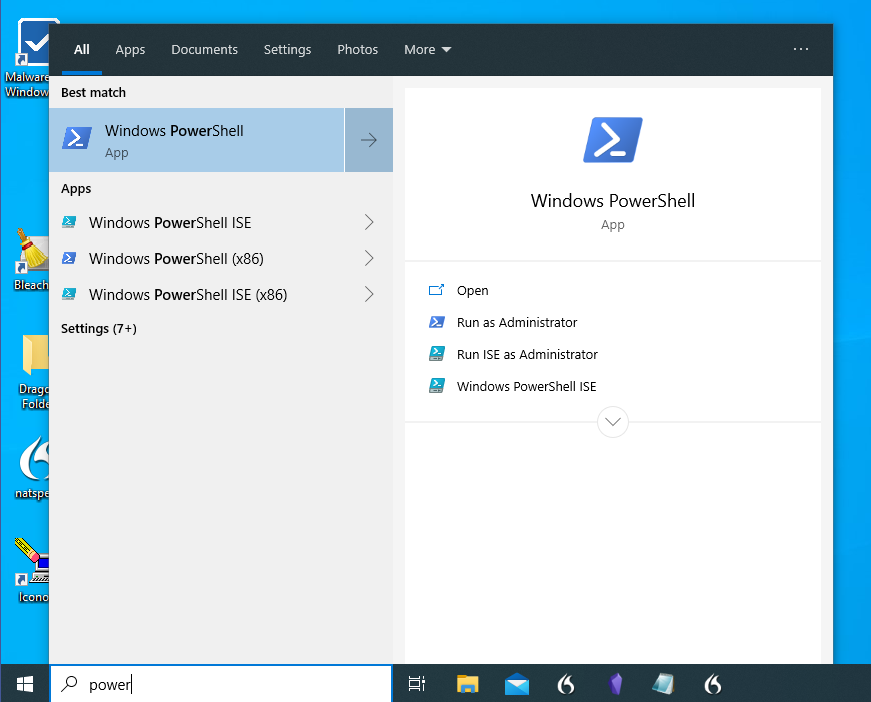
- To check the active disk's file system for errors and, if found, fix them, type "chkdsk /f" (without the quotation marks).
To scan a different storage device with chkdsk, state its letter after the command itself, as "chkdsk D: /f" to check the drive with the letter D, "chkdsk Q: /f" for the drive with the letter Q, and so on. - Chkdsk needs to lock the device it's checking to do its thing. You won't be able to access any files on this device while the process is running. It's also impossible to check and fix the storage device where Windows 10 is installed while actively using the OS. If you need to check that disk, chkdsk will suggest scheduling the scan for the next reboot.
- Are you suspecting that the file system corruption source is a failing storage device? Then, replace the "/f" parameter with "/r". This would make the command look like "chkdsk D: /r" for the drive with the letter D and "chkdsk Q: /r" for the drive with the letter Q. The "/r" parameter works the same as "/f" but also checks for physical disk errors, locates bad sectors, and can recover readable information from them.
⬛ attrib
Unlike what others may claim, attrib isn't a file recovery tool. Instead, it provides access to almost the same options you'd see if you'd right-clicked on a file and chose Properties. With it, you can change a file's flags to set it as hidden, read-only, archive, or as a system file.
Still, after a serious bout of filesystem corruption, or some other problem, your files might end up with the wrong flags. To fix them, run command prompt (CMD) or PowerShell as an administrator, as we saw above. When there, use the attrib command as follows:
- To mark a file as hidden (+h), read-only (+r), archive (+a), or system-related (+s), type:
attrib +h +r +a +s FILENAME
- When dealing with "lost" files, you'd probably want to do the opposite. To mark them as not hidden/read-only/archives, and surely not system-related. Thus, you should replace the pluses with minuses to instead remove those flags. In that case, the command would turn to:
attrib -h -r -a -s FILENAME
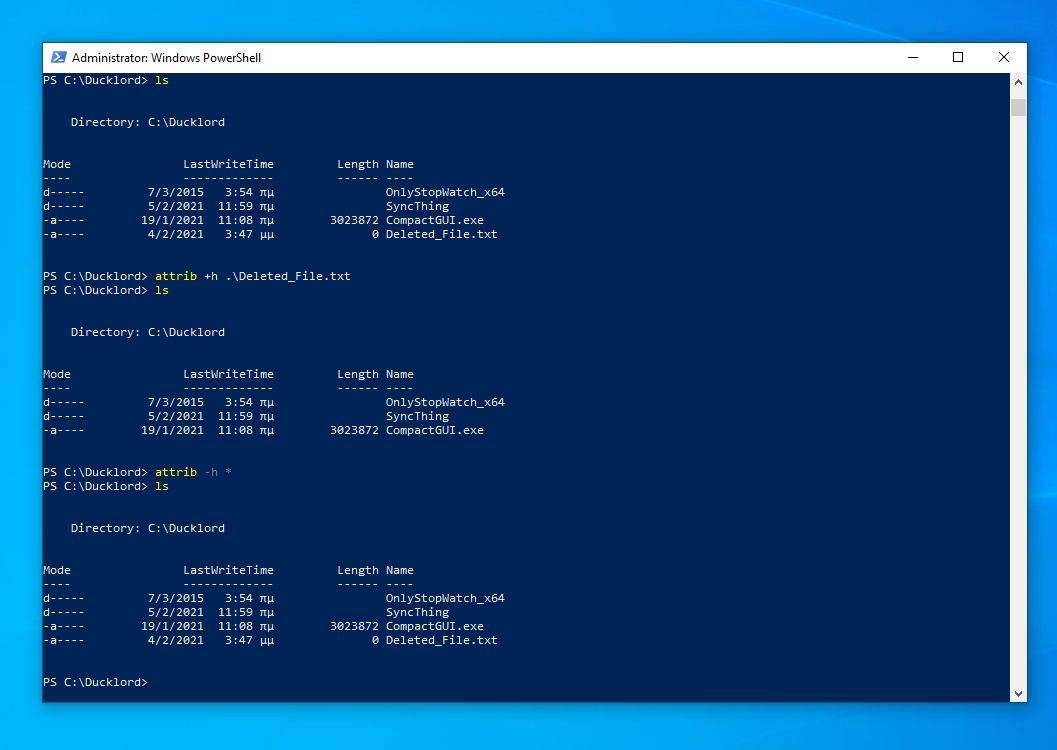
- Do you want to remove those flags from many files at once? You can run attrib with the "/s" and "/d" parameters. The first one ("/s") instructs attrib to apply your setting to all files in the active directory, recursively. The second one ("/d") tells attrib to also "touch" directories.
Note that you shouldn't randomly change the settings of files about which you know nothing. Nor should you ever run a batch command at the root of the storage device with your active operating system. Those could lead to further problems, the solutions to which would demand a wholly different guide.
Thanks to those two nifty tools that come with Windows, regaining access to your lost files might be a single command away. However, if your files were really deleted, you'll have to look into one of the solutions that follow instead.
Method #4: Windows File Recovery: Microsoft's Official Windows 10 File Recovery Solution
If you are on one of the latest versions of Windows (Version 2004 or newer), you can use Windows File Recovery. It's another command-line tool, which you will have to use through Powershell or the command prompt. Still, it's a pretty straightforward affair.
- Press the Windows key and start typing "Store". Then, choose the Microsoft Store entry that appears. When there, perform a search for "Windows File Recovery". Click the "Install" button to get the application.
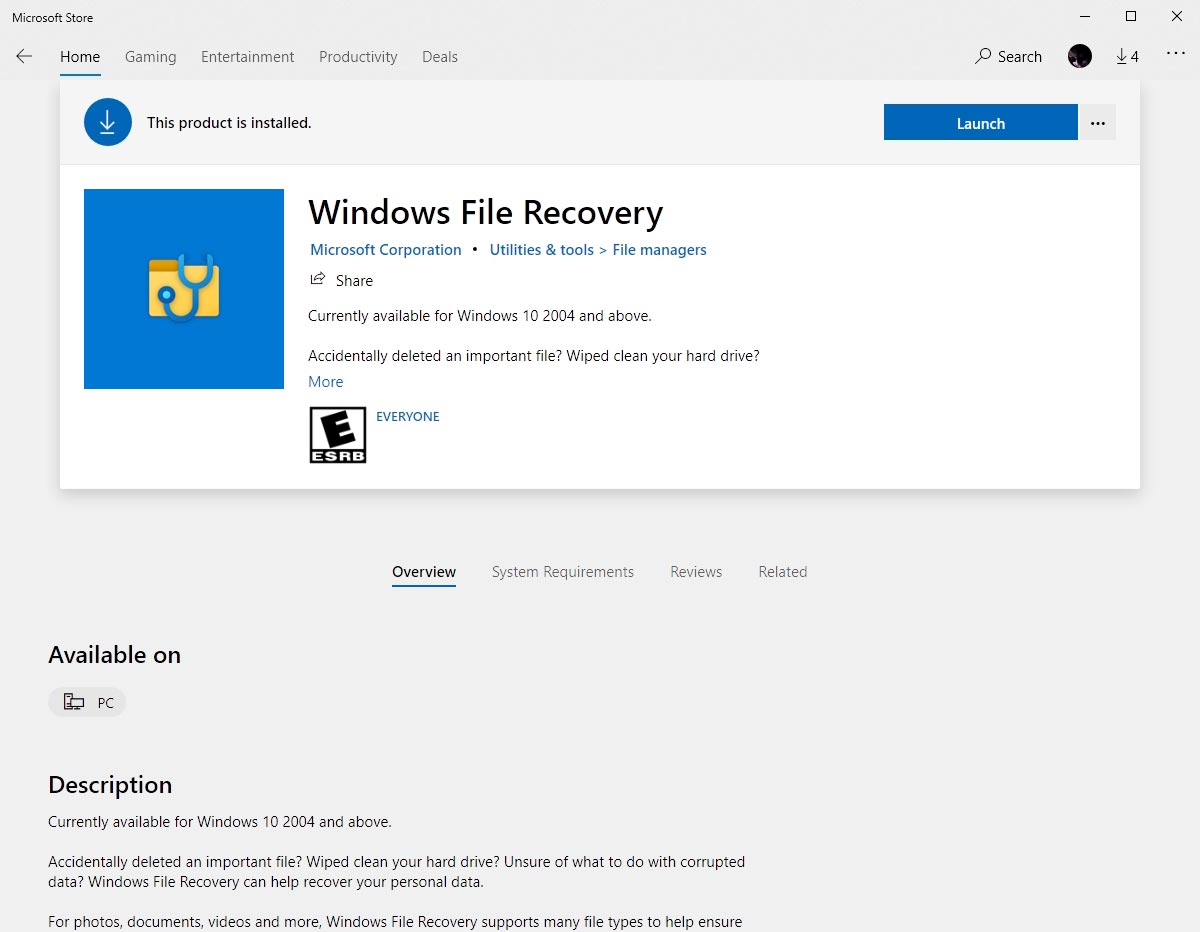
- Open either PowerShell or the Command Prompt with administrative privileges, as we saw before.
- If you're trying to restore files from a non-corrupted NTFS drive, type:
winfr SOURCE_DRIVE DESTINATION_DRIVE /regular
An actual version of the command to recover files from the system drive "C" to a backup drive "J" would be:
winfr C: J: /regular
If that command doesn't lead to the results you wanted, or you are dealing with a corrupted disk, swap the operating mode from "/regular" to "/extensive".
- Do you want to recover only files of a specific file type? Add "/n *.FILE_EXTENSION" at the end of the command above. For example, to undelete your lost TXT, Doc, and PDF files from drive "D" to drive "Q", you could type:
winfr D: Q: /extensive /n *.txt /n *.doc /n *.pdf
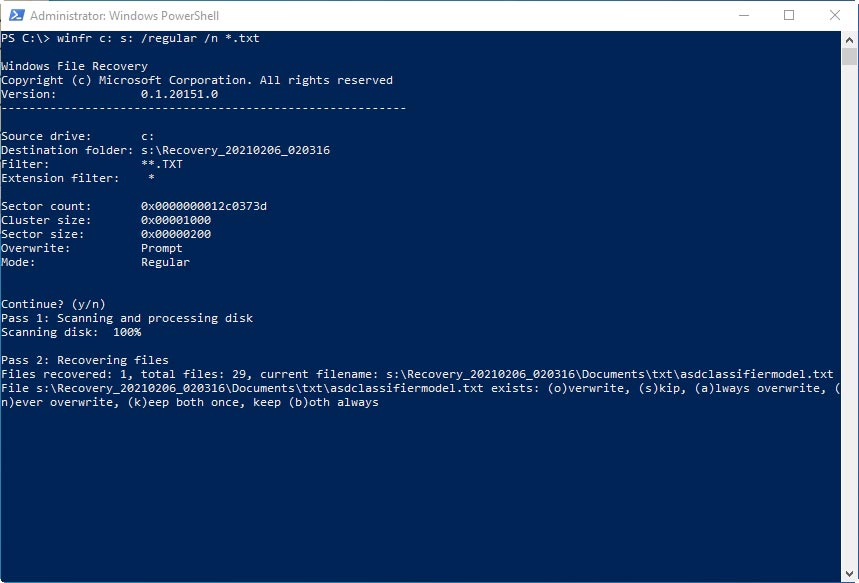
- The above commands automatically create a recovery directory. You'll find it in the specified target drive, with the time and date in its name. You can specify the recovery directory's name by stating a full target path instead of only a drive letter. This would look like:
winfr C: E:\RecoverDir
In this particular example, "RecoverDir" is the name of a folder in the "E" drive.
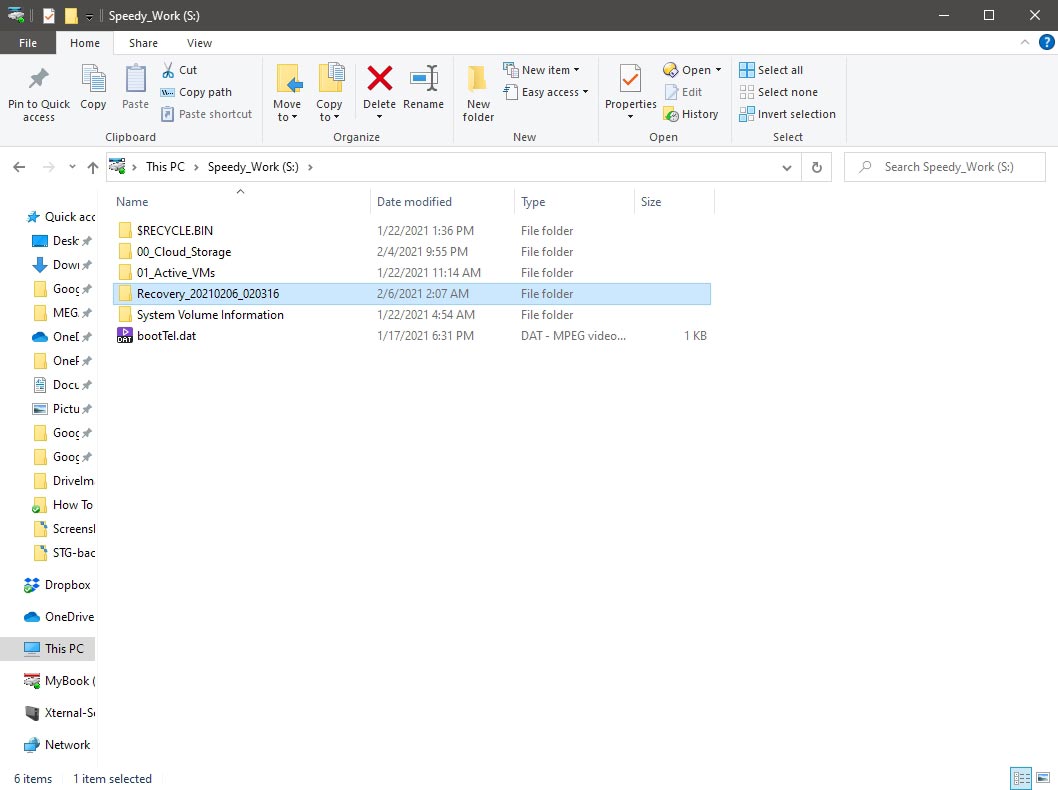
- Winfr also offers two more advanced modes for recovering files: segment and signature mode. You can choose the first one by adding an "/r" switch and the second with "/x". Unlike the default mode, they don't rely on the hard drive's Master Boot Record (MBR) and can recover more files. However, signature mode can only recover a small group of filetypes, like images stored as JPG or PNG files. To check out the supported filetypes, use the command "winfr /#" (without quotation marks).
Still, Windows File Recovery is a somewhat restricted tool and sometimes manages to restore everything but the files you wanted. That's when it's worth trying a third-party solution.
Method #5: Undelete Files on Windows 10 Using Third-party Data Recovery Software
Didn't Microsoft's Windows File Recovery bring back the files you wanted? That's when it's time to try a more established solution. We usually go for Disk Drill, which combines powerful recovery algorithms with outstanding ease-of-use.
Disk Drill is also available for Macs, and can scan Android phones and iOS devices when connected to your computer. For this guide, though, we'll be using it on Windows 10, to recover files lost on a PC.
- Visit Disk Drill's official site. From there, download and install the application. Then, run it, and answer positively when asked if you want to allow it to make changes to your device.
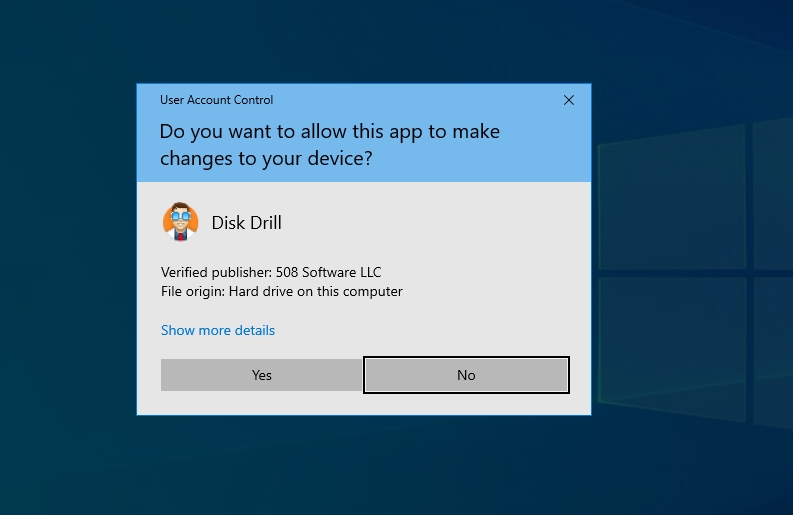
- Choose the storage device you want to scan for lost files from the main list at the center of Disk Drill's window. You might have more than one on your computer. Then, click on "Search for lost data" at the bottom right.
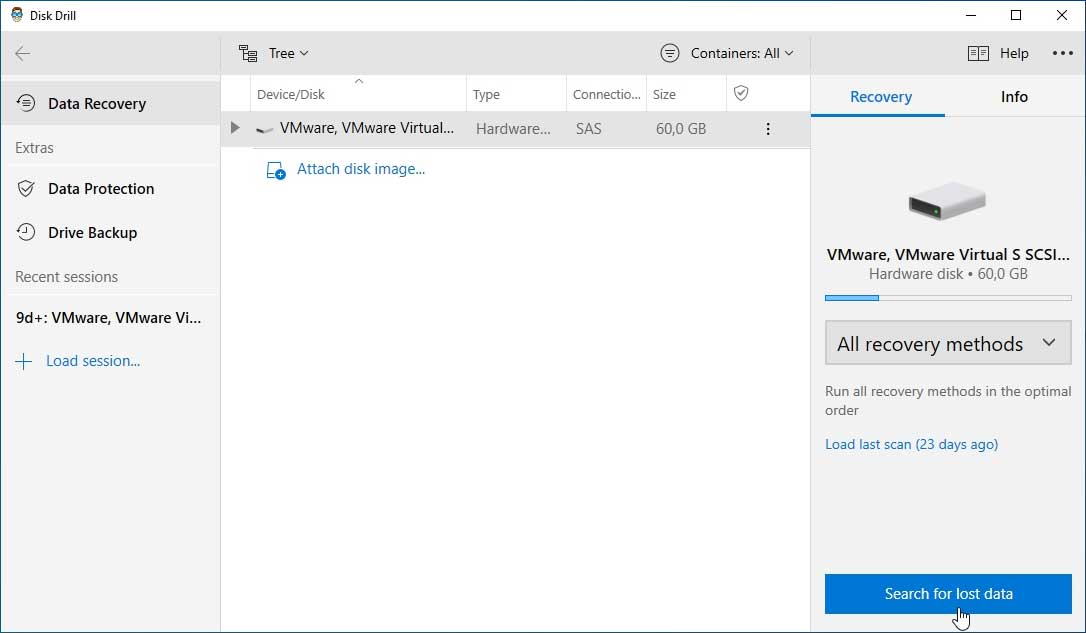
- Disk Drill will immediately start scanning your storage device. It will also present a summary of the lost files it's located and can recover, updated in realtime. You can check them out while the process is still underway by clicking on "Review found items" at the top right.
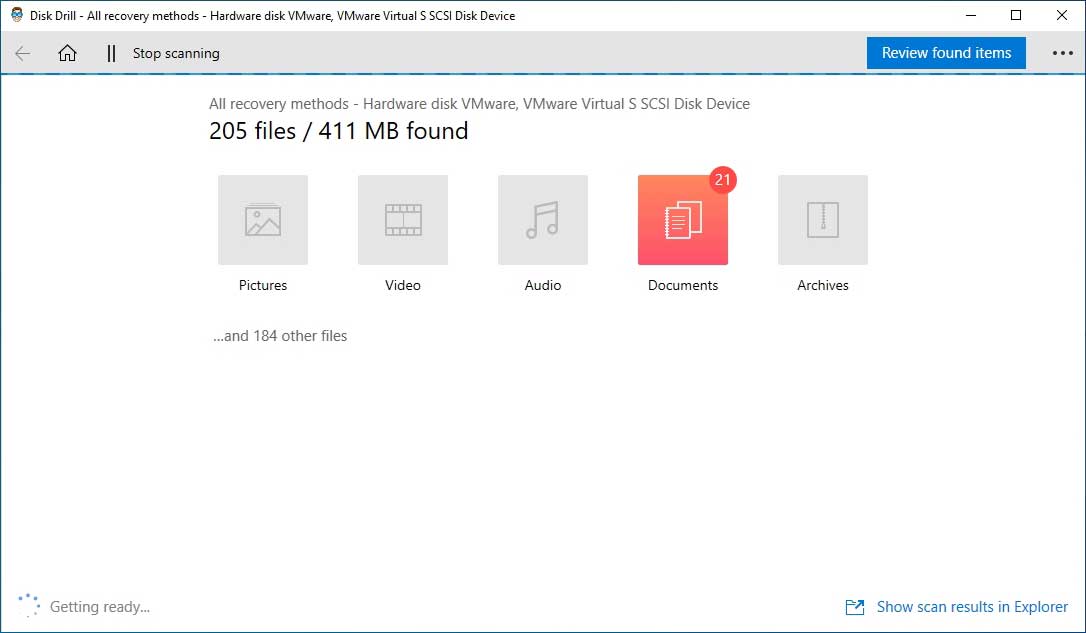
- Did Disk Drill find the files you want to recover before the scanning process completed? You can stop the scanning process by clicking on "Stop scanning" on the top left of the window. Then, proceed with their recovery. Look at the list of found files and "tick" on the left of the ones you want recovered. If they're not among the results, give Disk Drill's scanning some more time. Note that you can resume the scanning process if you've stopped it.
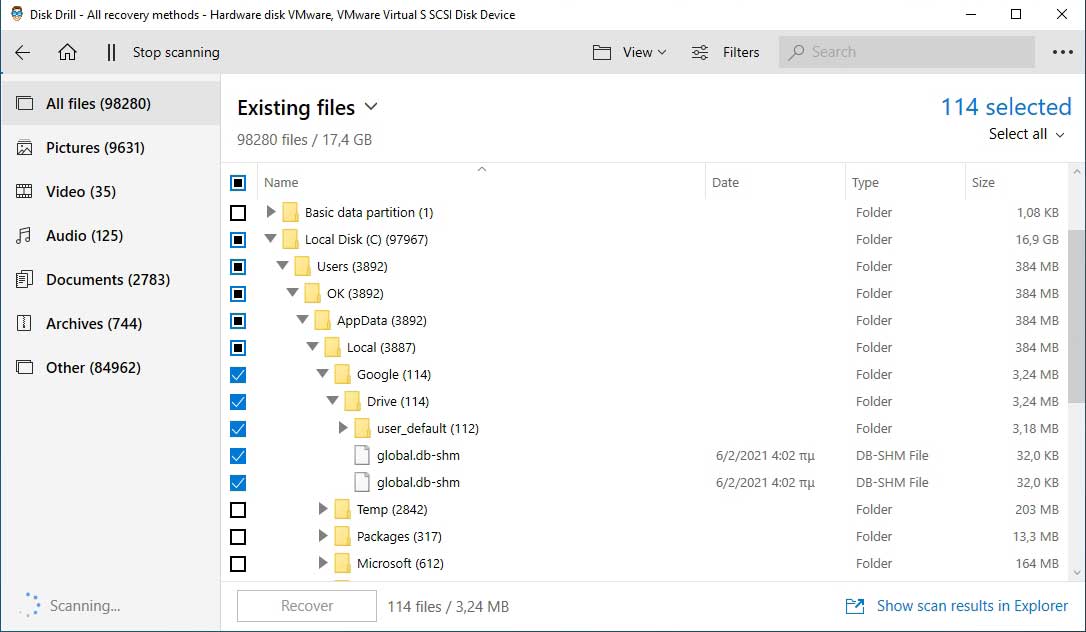
- Stop the scanning process and choose the files you want to recover. A blue "Recover" button will be enabled on the bottom left of Disk Drill's window. Click on it to move to the next step.
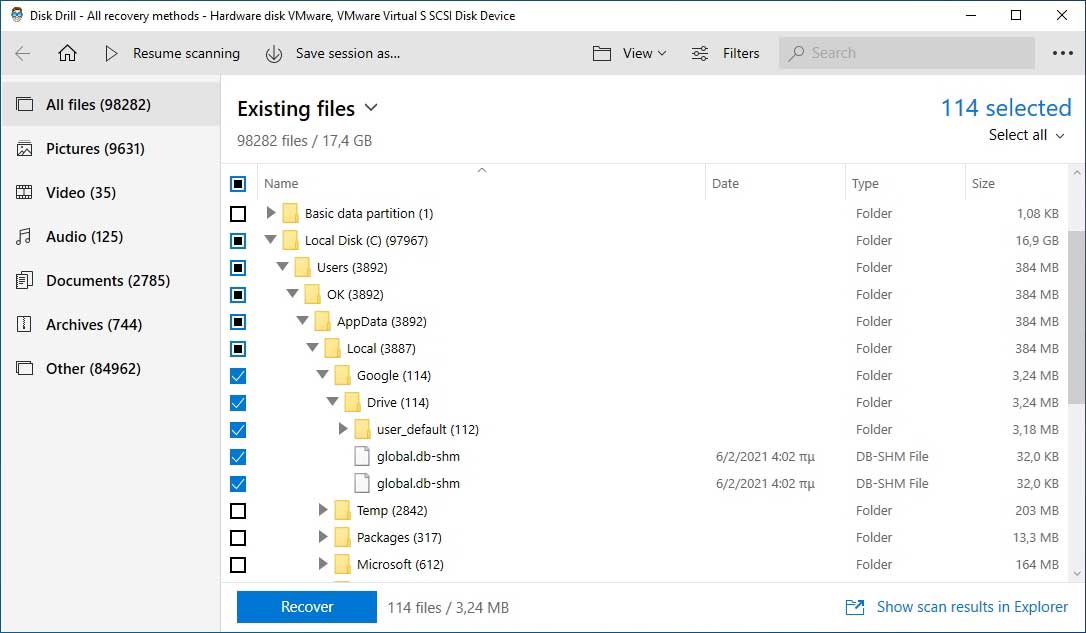
- Disk Drill will ask you where you want to save your files. It's better to choose a different device than the one from which you're trying to recover your lost data.
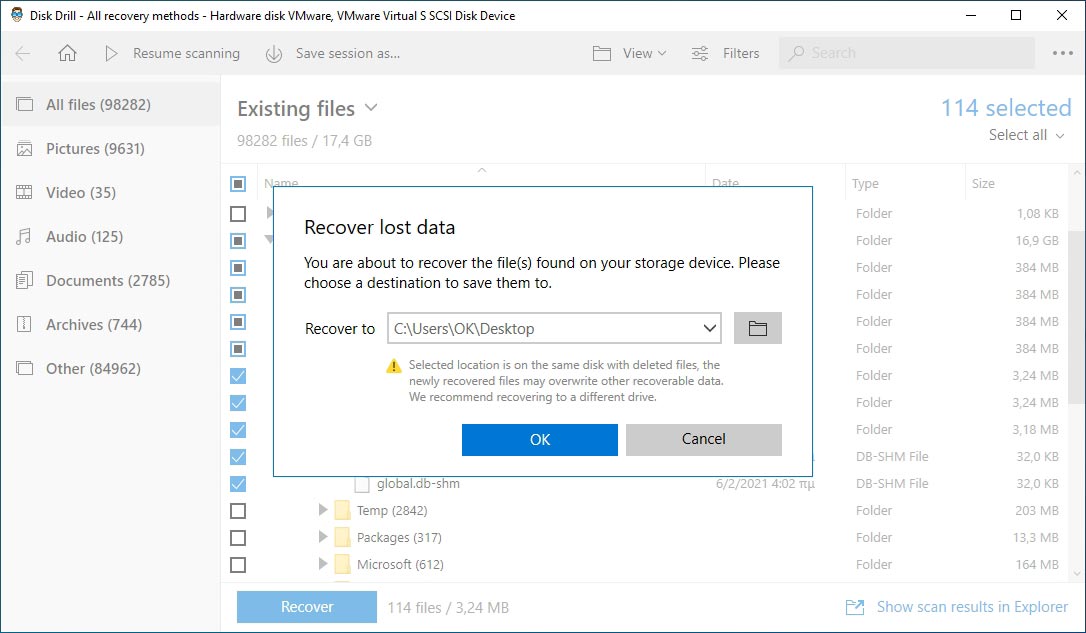
- Soon after, Disk Drill will inform you that the recovery process is complete. It will offer the option to check out the recovered files in Windows Explorer.
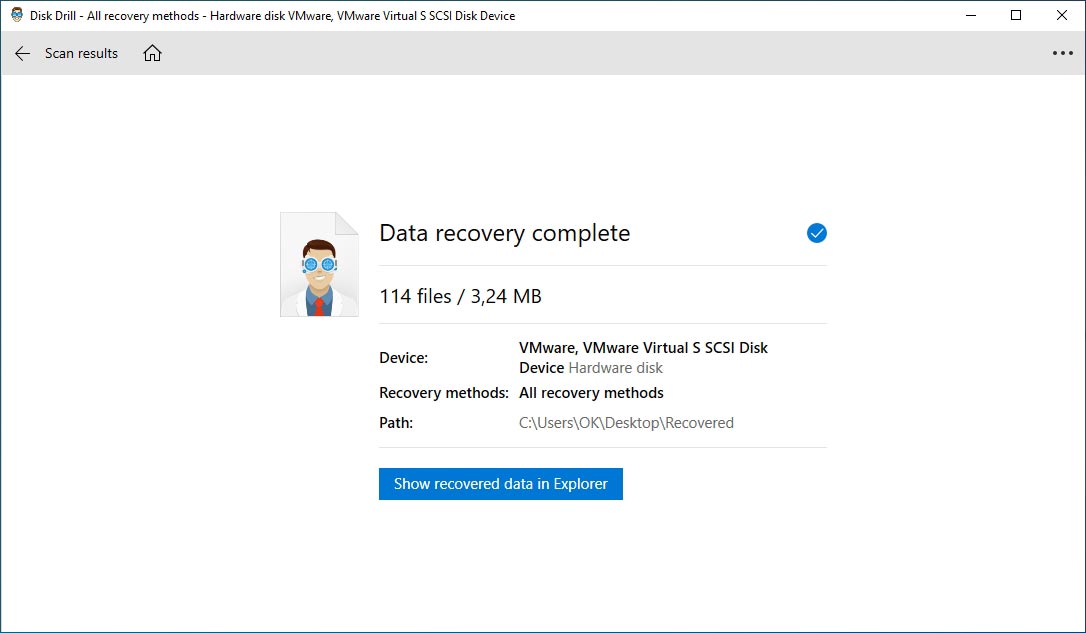
- Disk Drill will have also kept your recovered files' folder structure. Thus, you might have to look into the results folder's subfolders to find them.
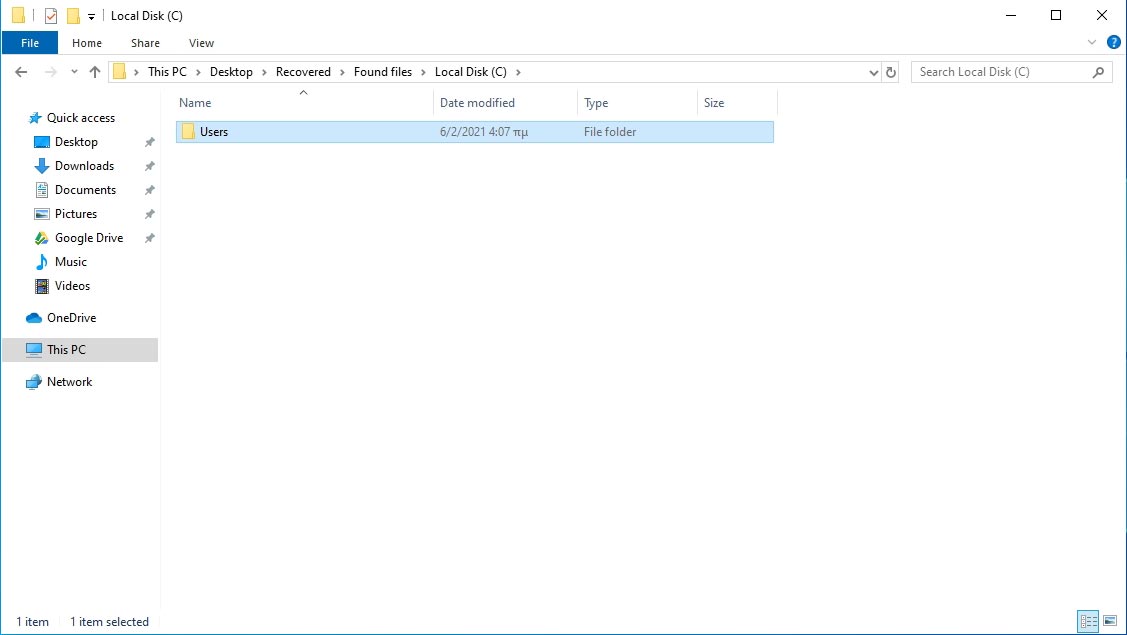
Despite Disk Drill's impressive results, it's better to be prepared. Another way to put this would be "it's better to keep backups". Thankfully, Microsoft equipped their latest OS with many backup solutions, through which you can recover deleted files on Windows 10.
Method #6: Pull Windows 10 Lost Data Out Of (File) History
Out of all the backup solutions included with Windows 10, File History is the one specializing in securing your personal files. However, as with all backup solutions, to recover your lost data on Windows 10 using it, you must have first set it up.
File History is best used with an external storage device, like a USB flash drive or an external hard disk drive. We suggest you use one with ample space to hold multiple versions of your personal files.
- File History relies on a secondary storage device. Thus, the first step is connecting said device and ensuring it's accessible and writable. For this guide, we'll use a 16 GB USB flash drive.
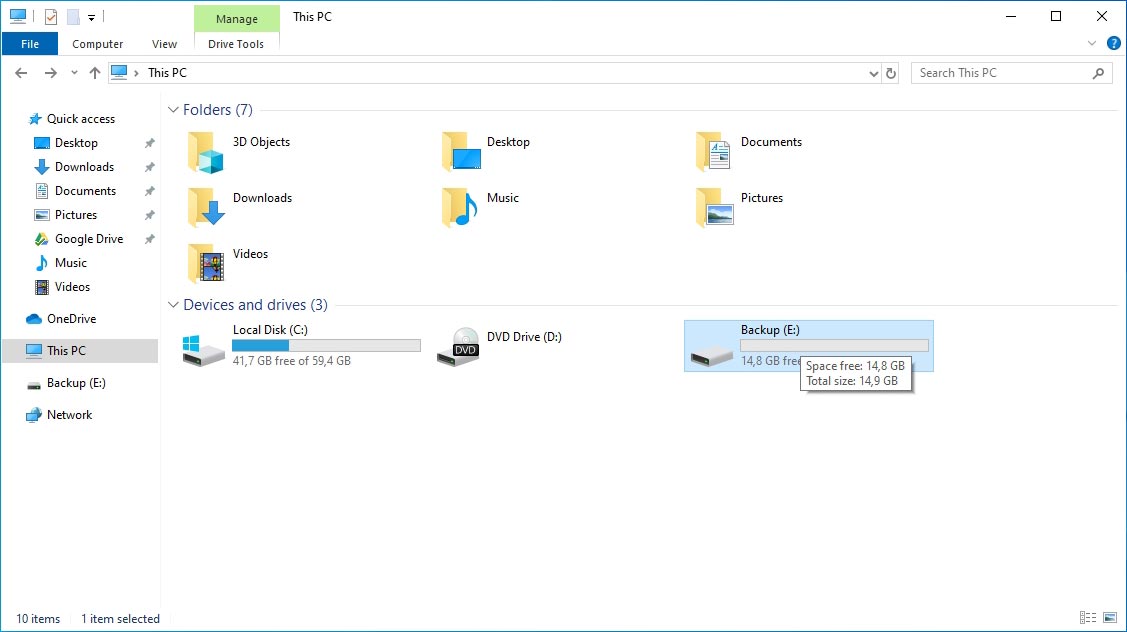
- Locate the File History options. To do that, either click on the start menu button, or press the Windows key on your keyboard, and start typing "file history". When "Restore your files with File History" shows up, click on it.
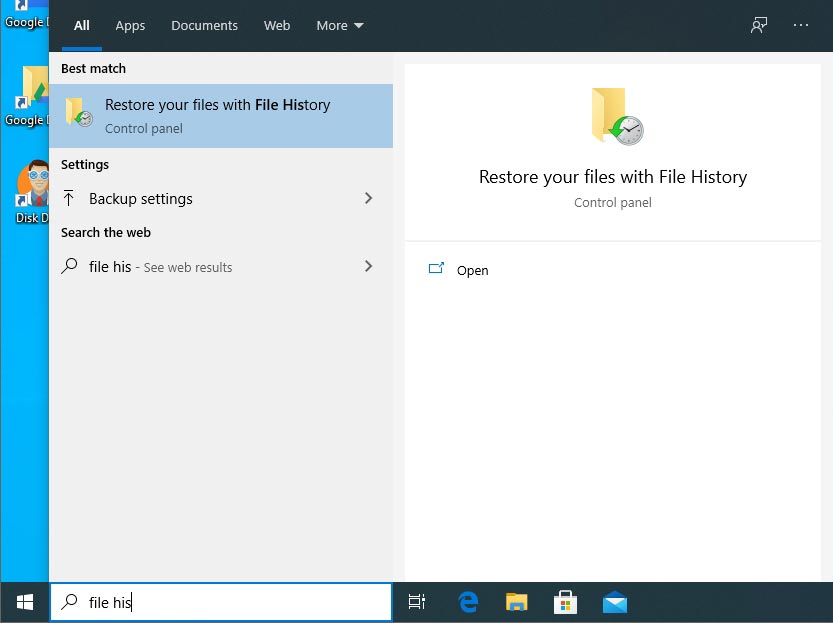
- File History will greet you with a blank page since it's not enabled yet. Click on the underlined "Configure File History settings".
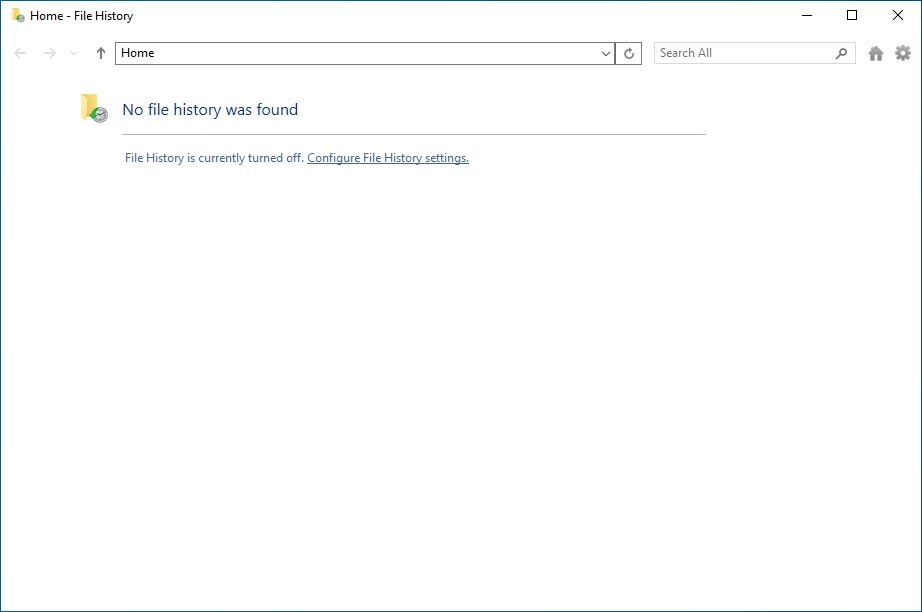
- File History will ask you to select a drive where it will store its backups. You can choose a drive from its list or select a network location – like a shared folder on another PC or a network drive. If you go for a network-accessible target, you should make sure that it's always available for File History to save its backups. Avoid choosing something like another family member's laptop that randomly turns on and off throughout the day.
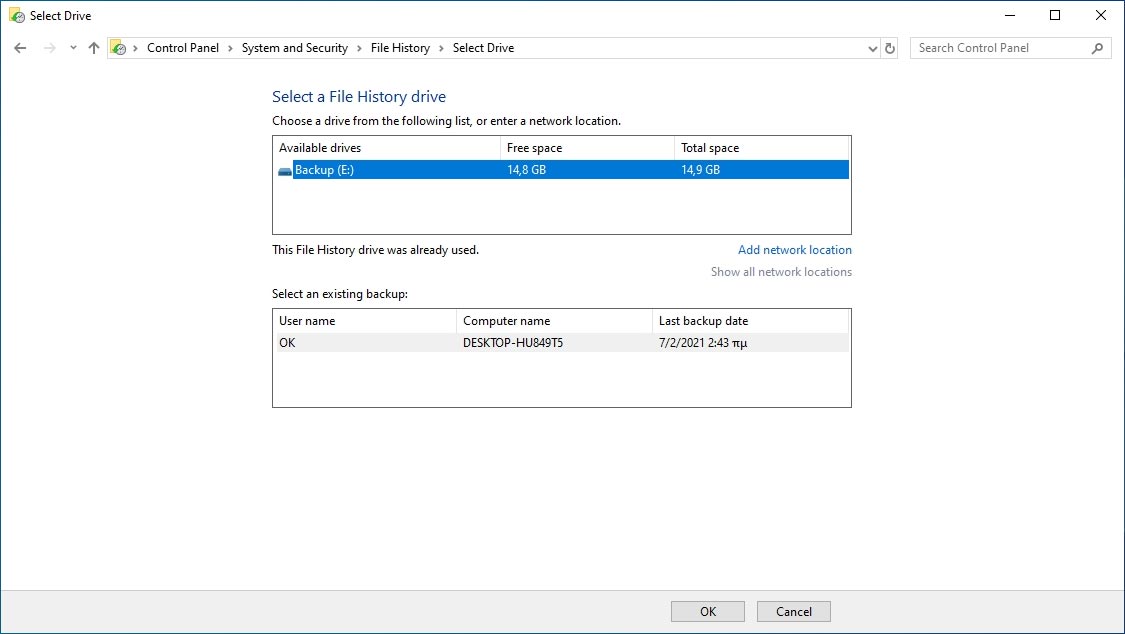
- File History will report that it's turned on and using the target drive you selected. However, your files won't be safe yet. File History will currently contain zero backups and won't create one until it detects changes to your files. Thus, it's better to create the first backup manually. Do that by clicking on the small blue "Run now" under your drive's icon.
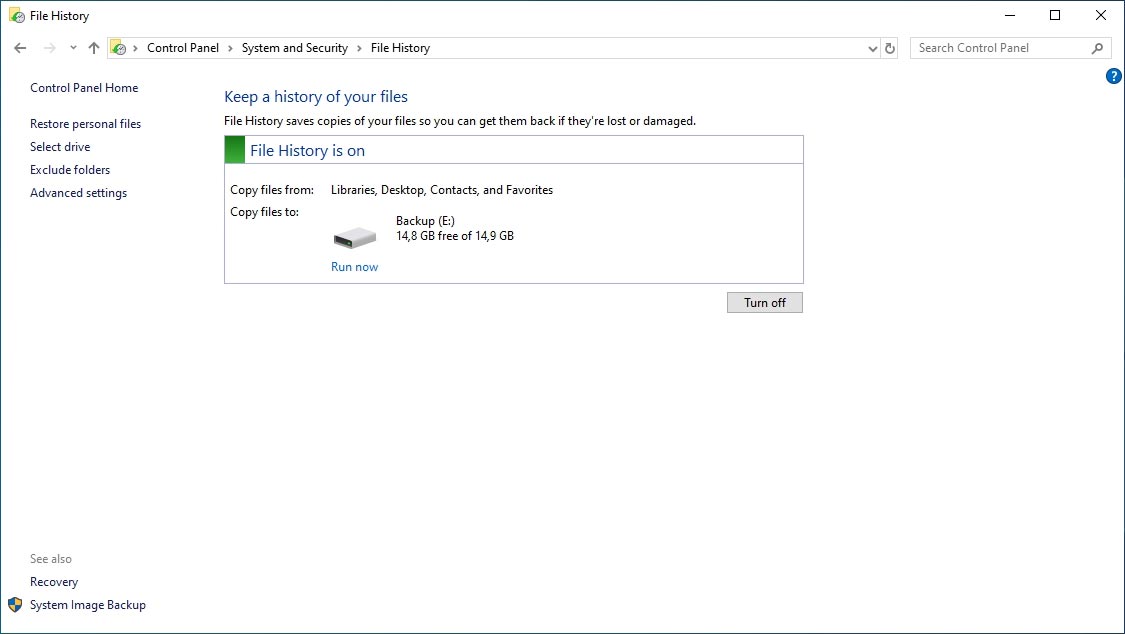
- With backups available, restoring your files from File History is easy. Return to File History's main page and click on "Restore personal files" from the menu on the left. File History will show you the contents of its latest snapshot. At the bottom of the window, two buttons for back and forward allow you to move between snapshots, offering access to different versions of your files.
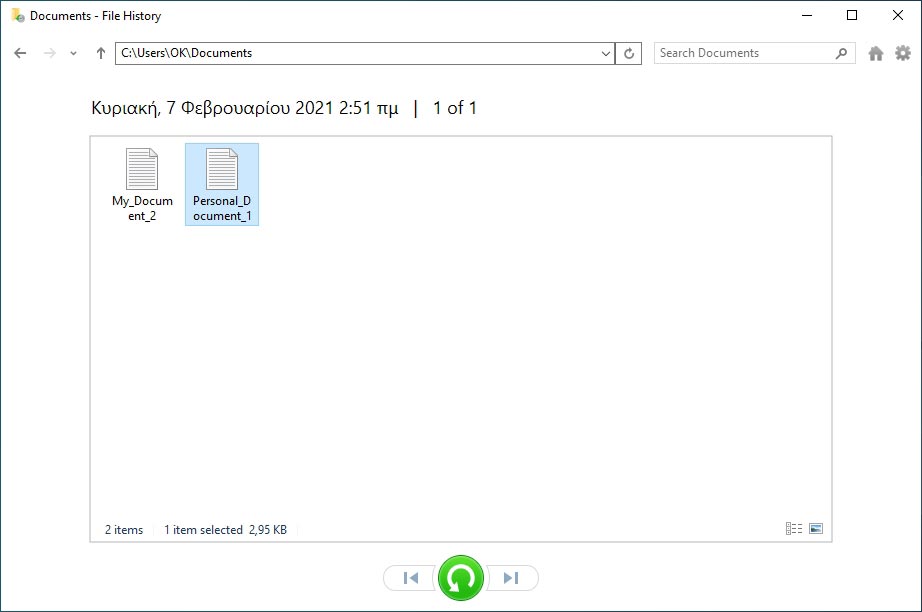
- You don't have to recover everything from a snapshot. You can selectively choose files and folders by keeping the CTRL key pressed while clicking on them. Then, click on that big, friendly, green button at the bottom of the window to initiate the recovery process. When it completes, you will find your files back at their original location.
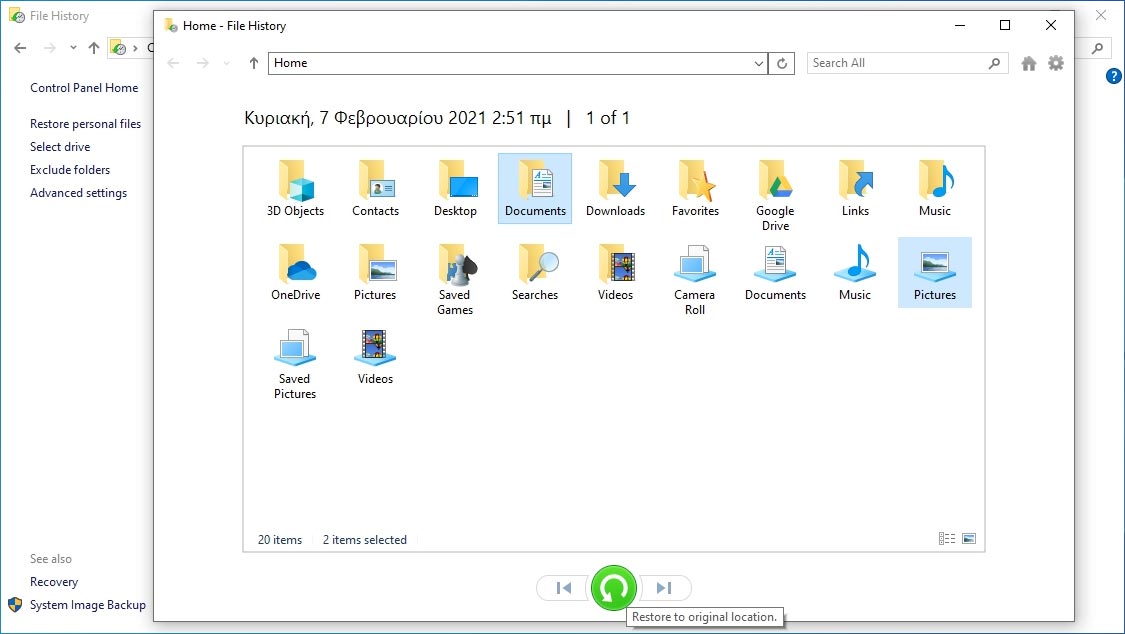
- You can add more folders to File History apart from the default ones. However, keeping up with Microsoft's tradition of unnecessarily complicating things, that's done from a wholly different menu. Click on the start button or press the Windows key and start typing "Backup settings". Choose that entry when it shows up.
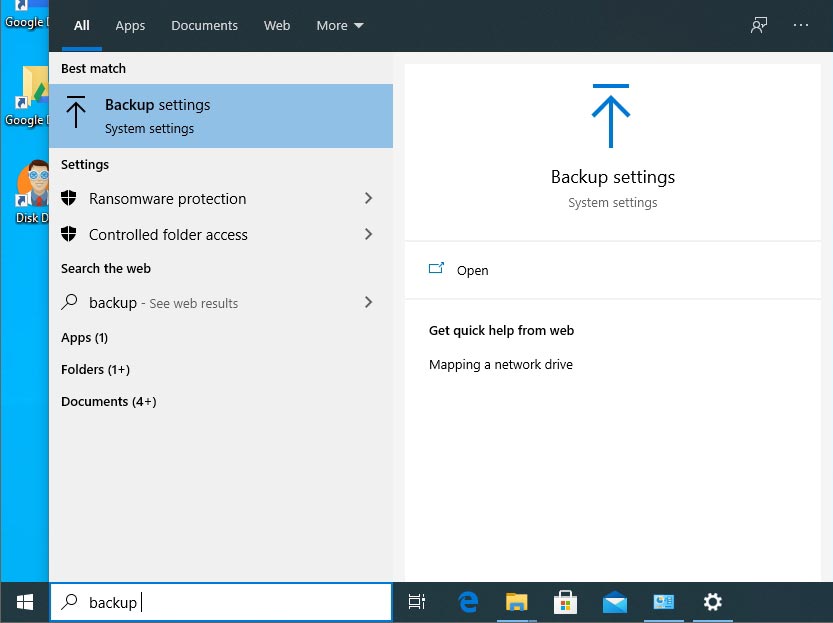
- Enable "Automatically backup my files" if it's not already set to On. Then click on "More options" directly underneath.
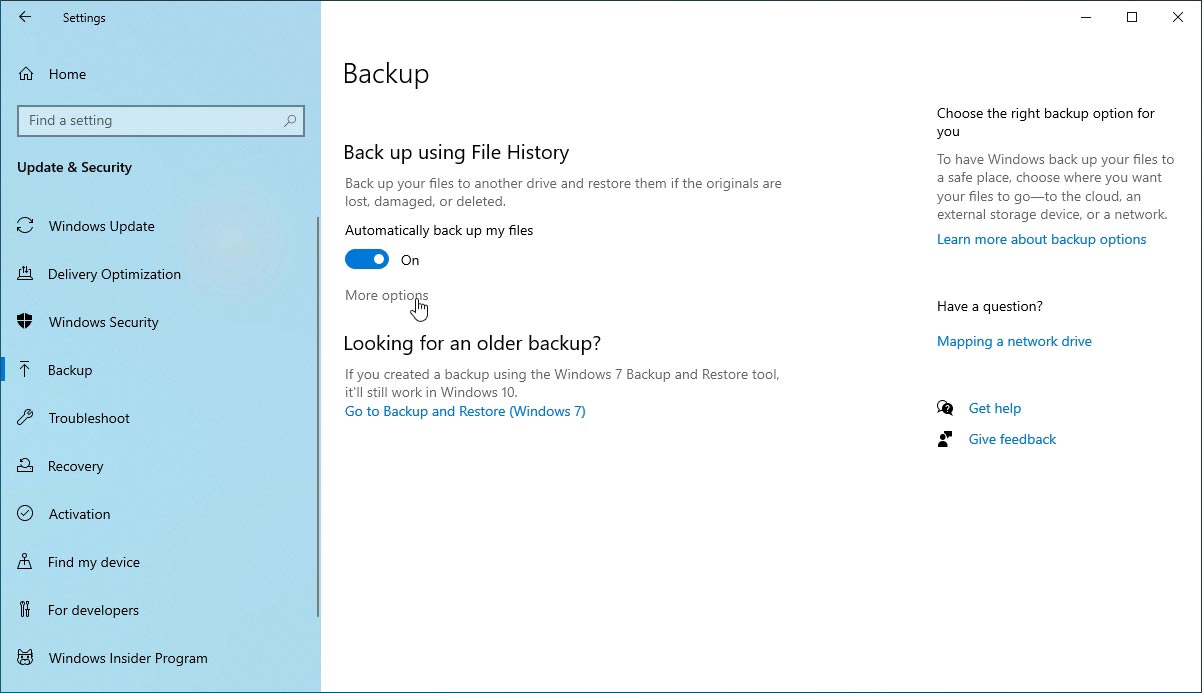
- Click on "Back up now" if you are informed that "Your data is not yet backed up" to create the first backup manually. You can also tweak the backup schedule from the drop-down menu underneath "Back up my files". Under "Keep my backups", a second drop-down menu allows you to indirectly define how much storage your backups will take by limiting their number. To include more folders in the backups, click on the "Add a folder" option, with a plus icon next to it, under "Back up these folders".
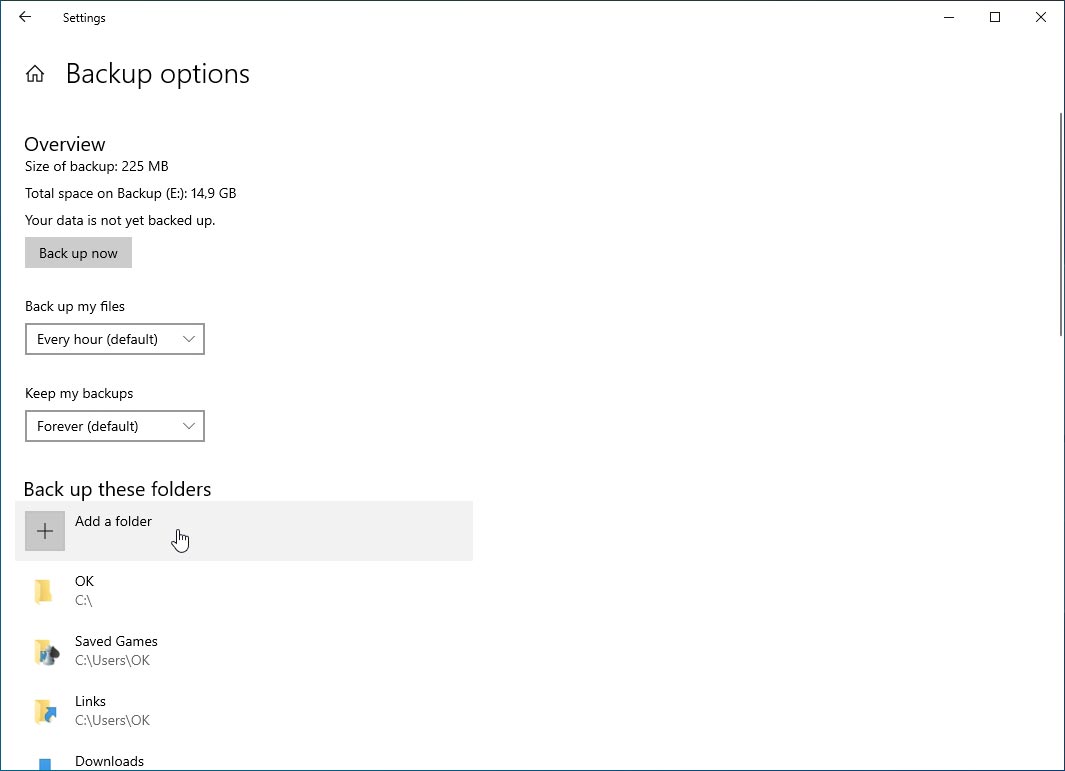
- If you scroll down below the folders list, you will find the option to exclude some folders from your backups. This is useful when you want a folder backed up, but not some of its subfolders. Right below is the option to "Stop using drive", which will also stop File History from taking backups of your files in the future.
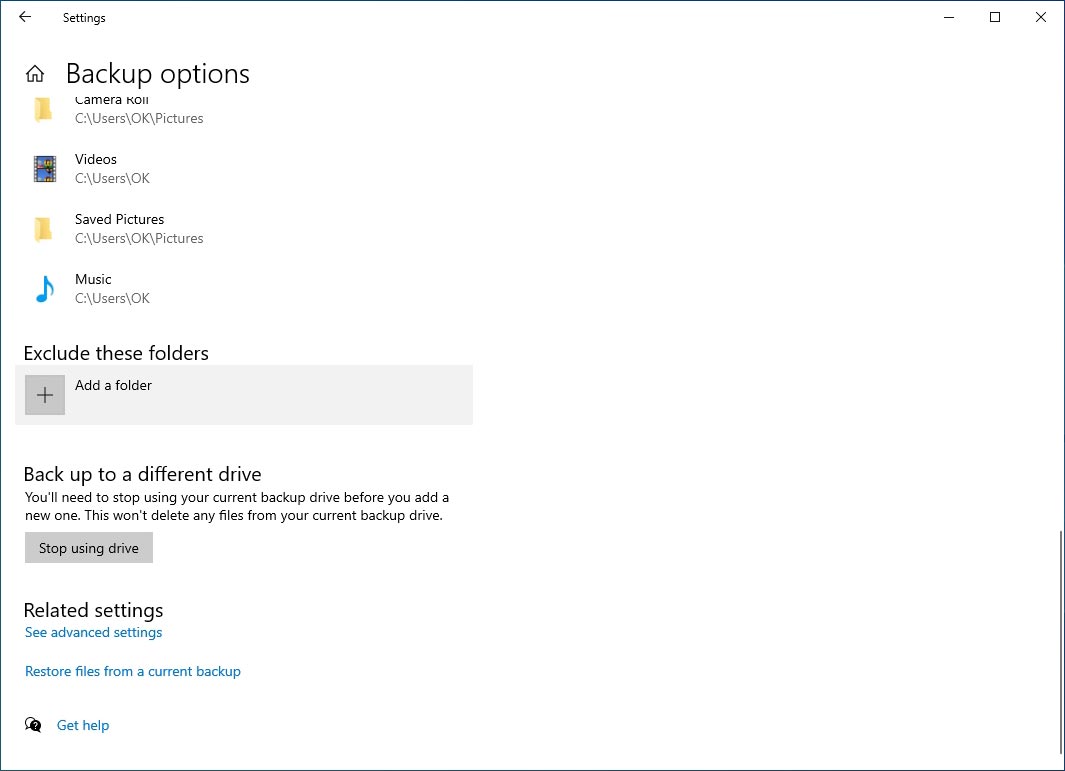
- You can also access the contents of your File History backups directly from Windows Explorer. If you right-click on a folder or file that's backed up, you'll see an option to "Restore previous versions". That's a shortcut to the same window you'd get if you right-clicked a file or folder, chose Properties, and then moved to the "Previous Versions" tab.
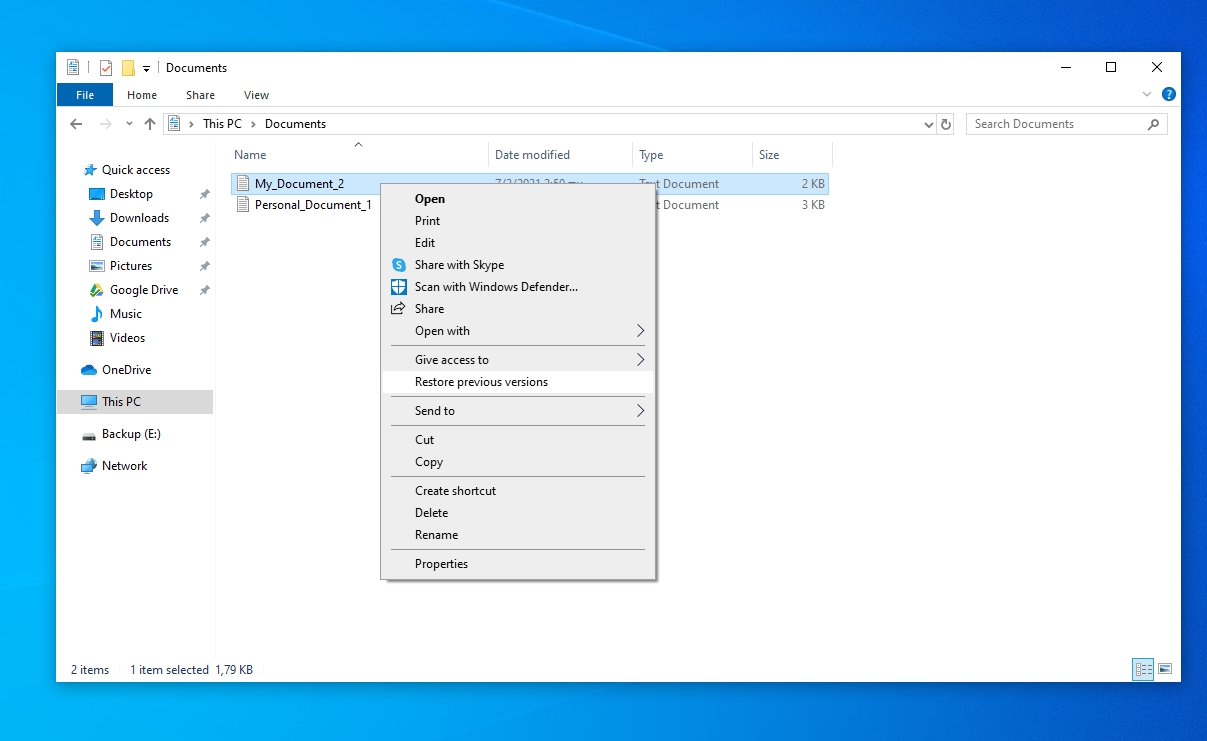
- From there, you can choose the version of the file or folder that you wish to restore. Then, click on the "Restore" button on the bottom right to get it back. If you don't want to overwrite your current data, click on the down arrow on that button's right and choose "Restore to…" instead. Then, select where you want your files recovered. You can also directly open a previous version of a file using the "Open" button instead.
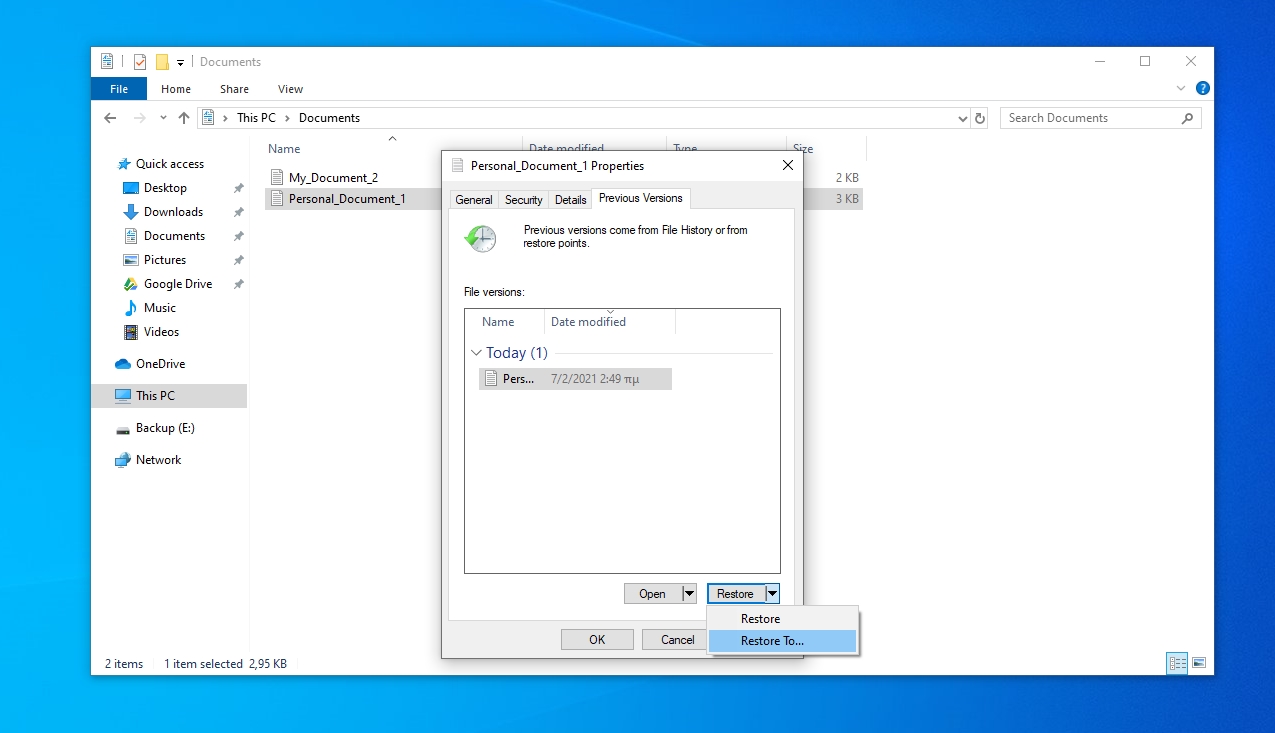
File History is the new way of keeping your personal files secure with Windows 10. If you were used to how Windows 7 did this or also want to keep backups of your whole operating system, that's still an option, as we'll see right next.
Method #7: Recover Lost Files on Windows 10 With Backup and Restore (Windows 7)
This title makes more sense when you realize we are not talking about Windows 7 itself. Instead, "Backup and Restore" is the name of another backup solution included in Windows 10, kept from the previous version of Microsoft's operating system.
Unlike File History, Backup and Restore can also keep backups of the operating system. It's also closer to a classic backup solution: it doesn't present its backups as a snapshot sequence, and you have to choose from where to restore your data manually.
As its name hints, to restore your files with Backup and Restore, you first need to have them backed up.
- Visit Windows 10's Control Panel. For a quick jump there, either press the start button or press the Windows key on your keyboard and start typing its name. Then, choose it when it shows up. From there, click on "Backup and Restore" under System and Security.
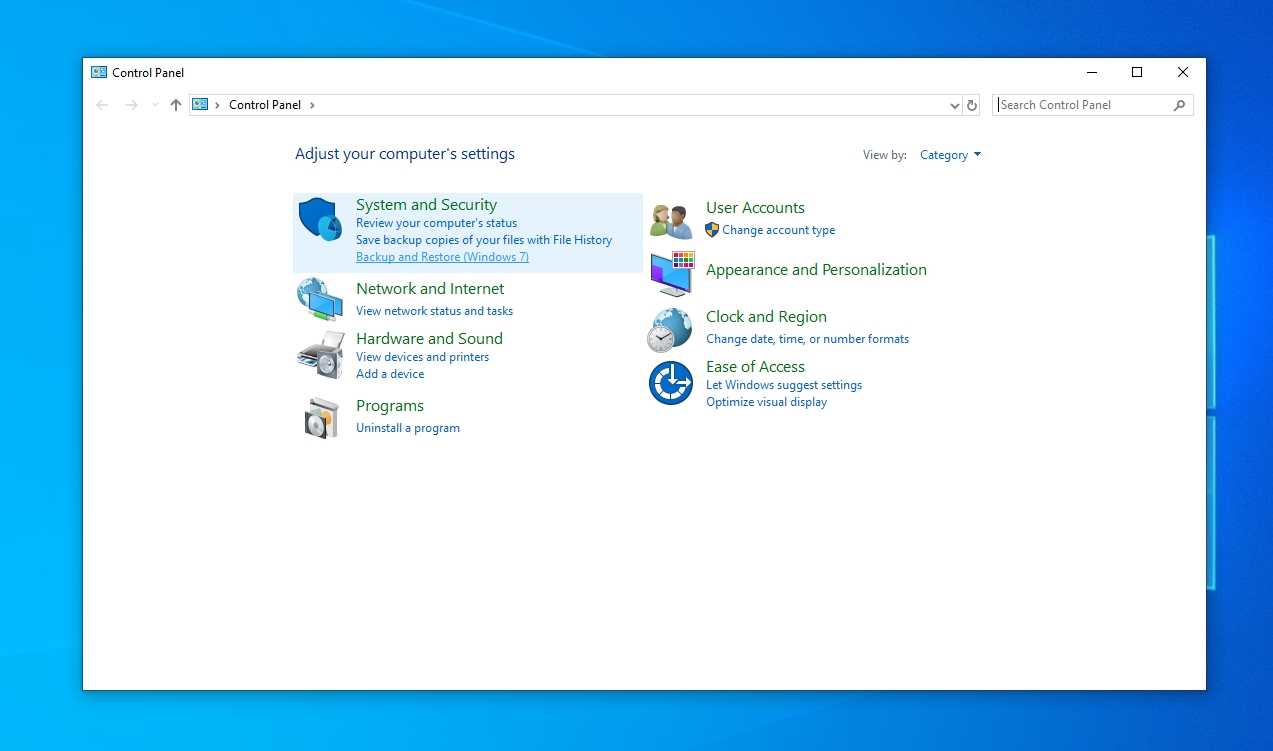
- Windows will inform you that "Windows Backup has not been set up". Click on the "Set up backup" on the right.
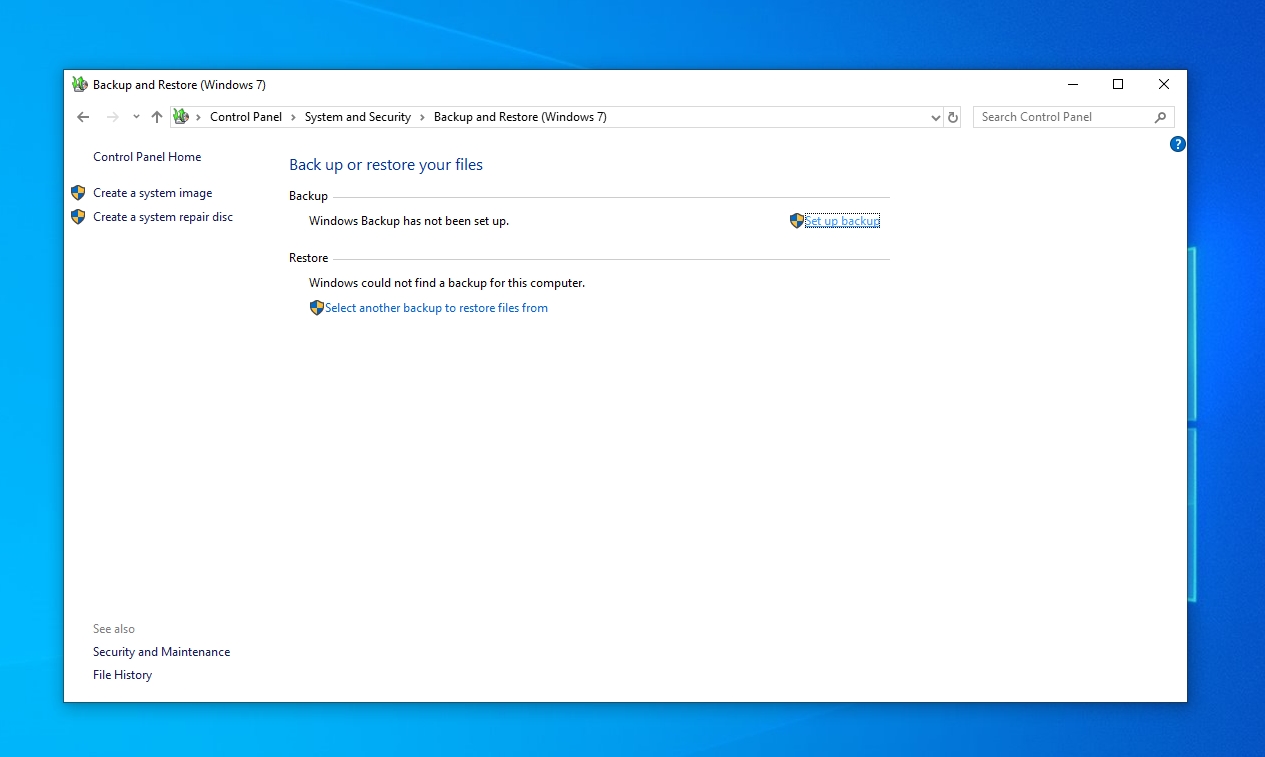
- Choose the drive where you want to save your backup. Like before, you should choose a secondary drive with enough space or a network location. Keep in mind that backing up your whole operating system can take up as much space as its partition, or even more. Then, click on Next.
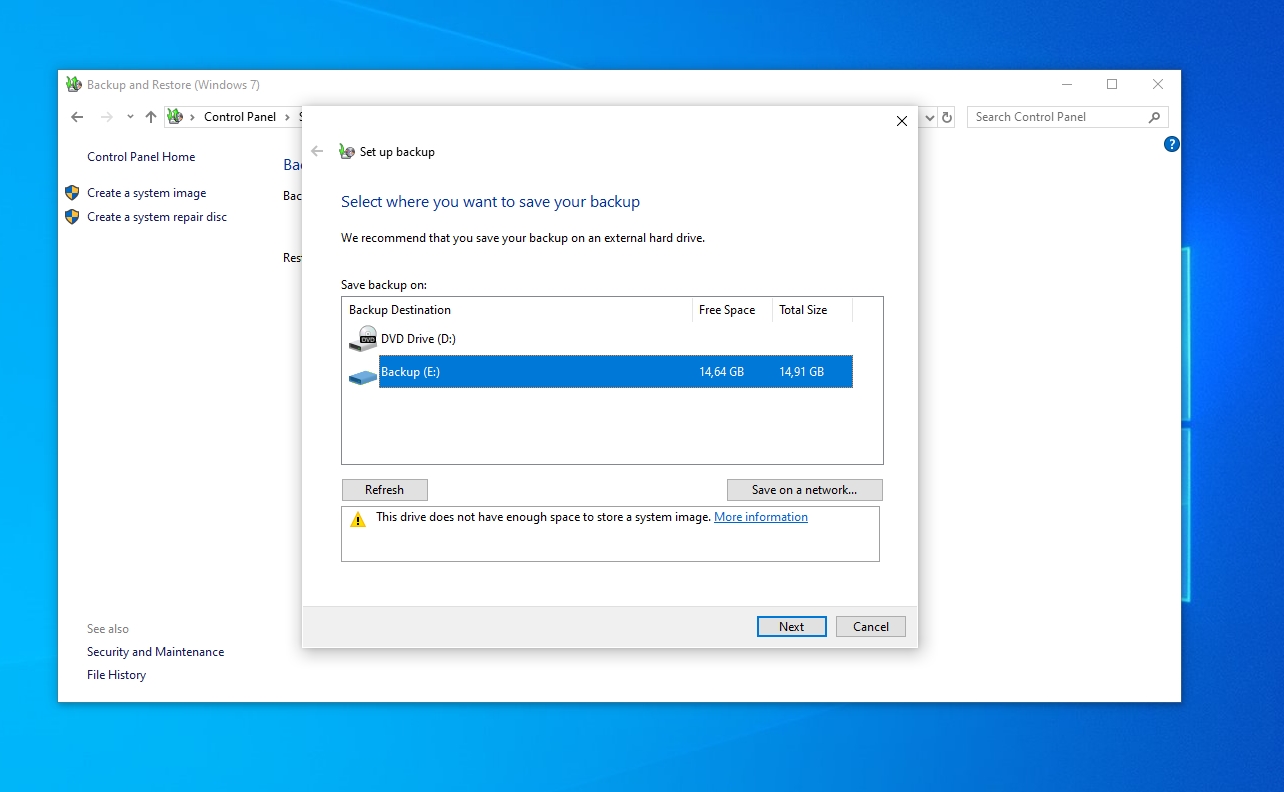
- There's a caveat with network locations: Windows might inform you that it can't save a system image there, forcing you to select a local drive. You can choose what to back up. Your user account's library folders will be preselected, to which you can manually add folders from your computer's storage devices.
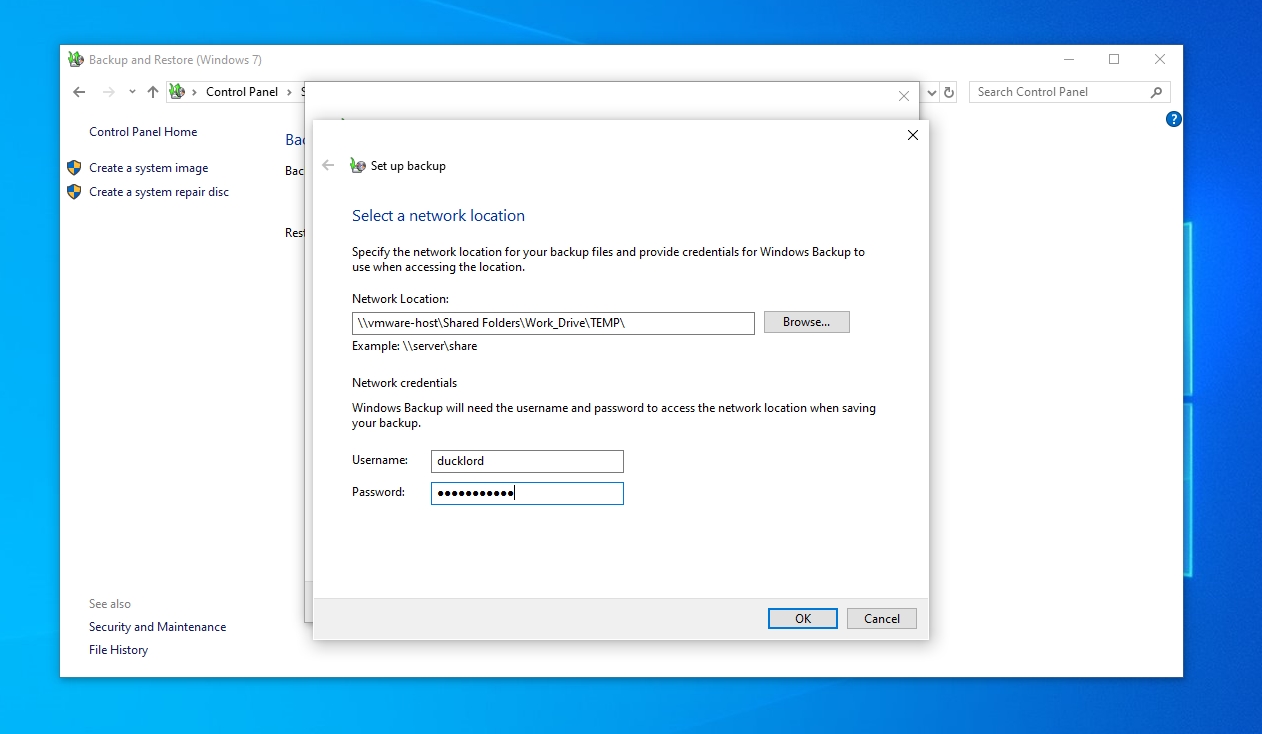
- Depending on what you've decided to backup, the process can take a while. Even more so if you chose to keep a system image, which means backing up everything in the operating system's partition.
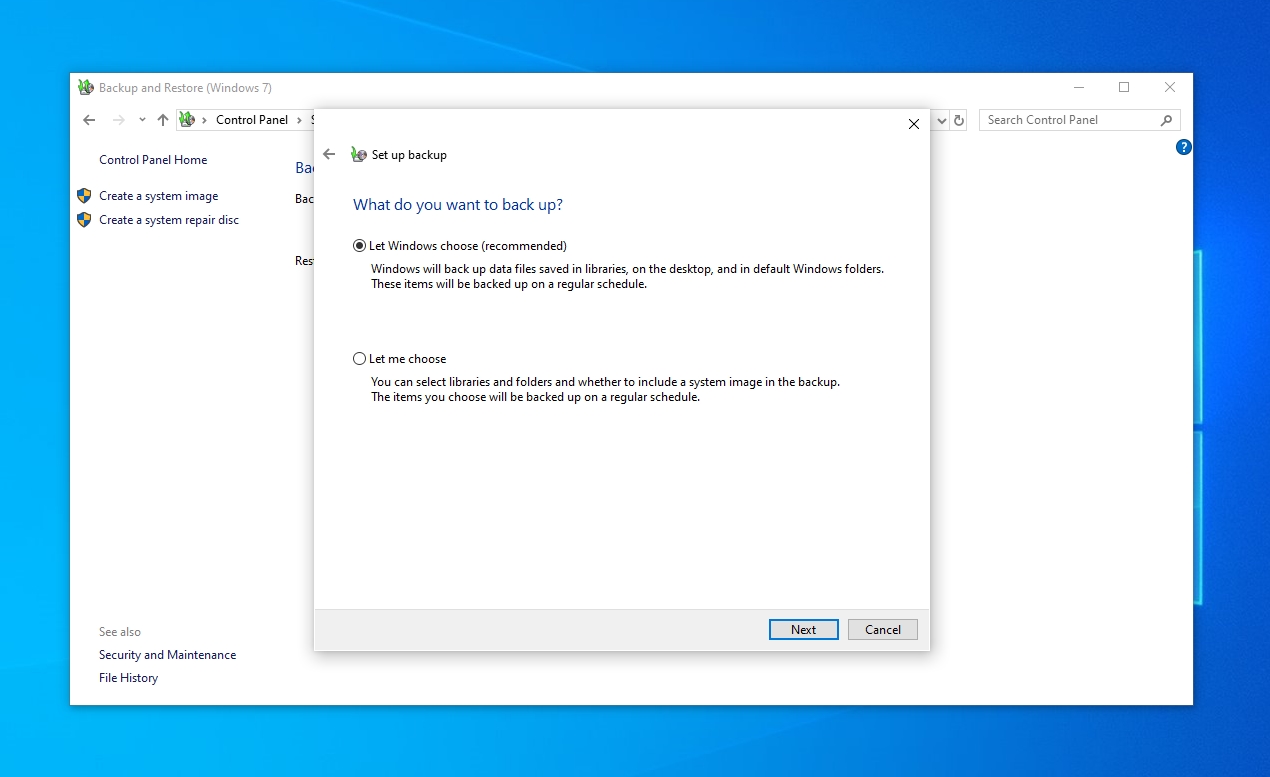
- Are you running out of storage space? By clicking on "Manage space" and then clicking on the "View backups…" button, on the right of the new window that will pop up, you can check out the available backups and the space each of them eats up from your storage. You can remove some of them to get back some storage space by selecting them and then clicking on the "Delete" button on the right of their list.
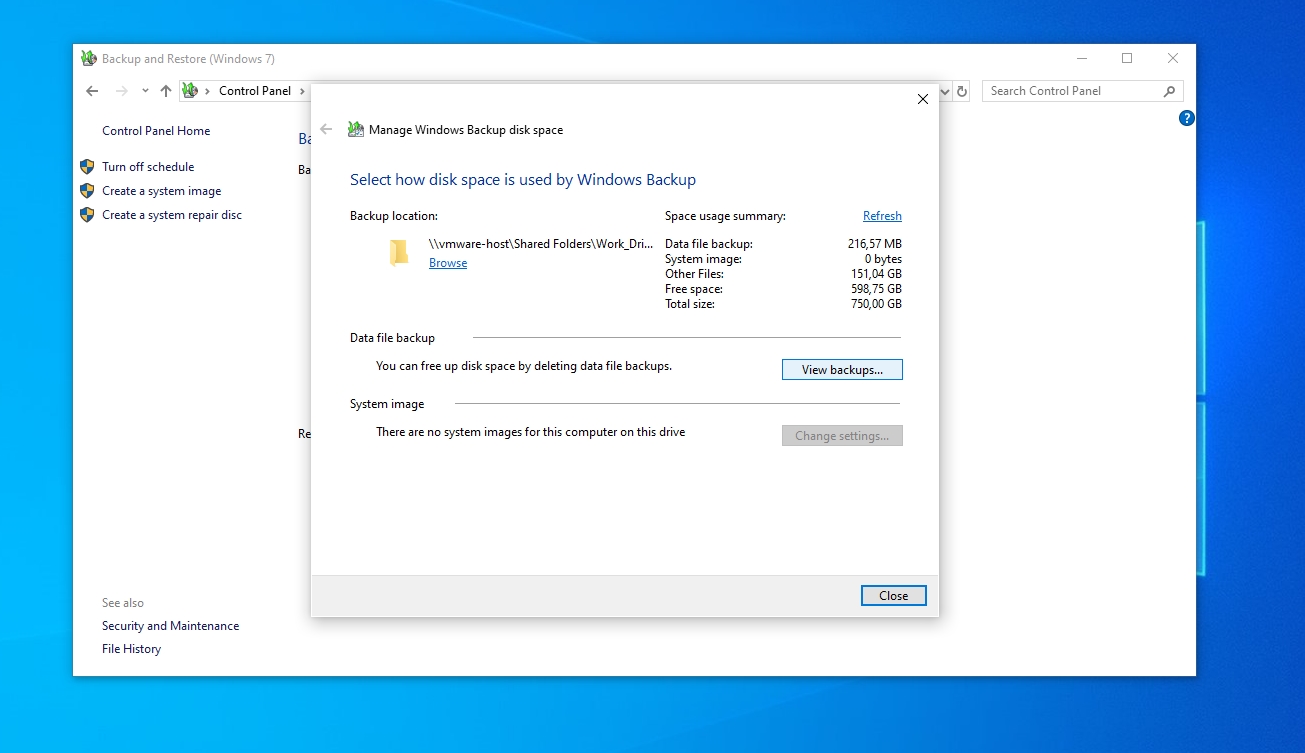
- Ready to restore your files from those backups? Return to the "Backup and Restore" main page. Then, click on "Restore my files" on the bottom right.
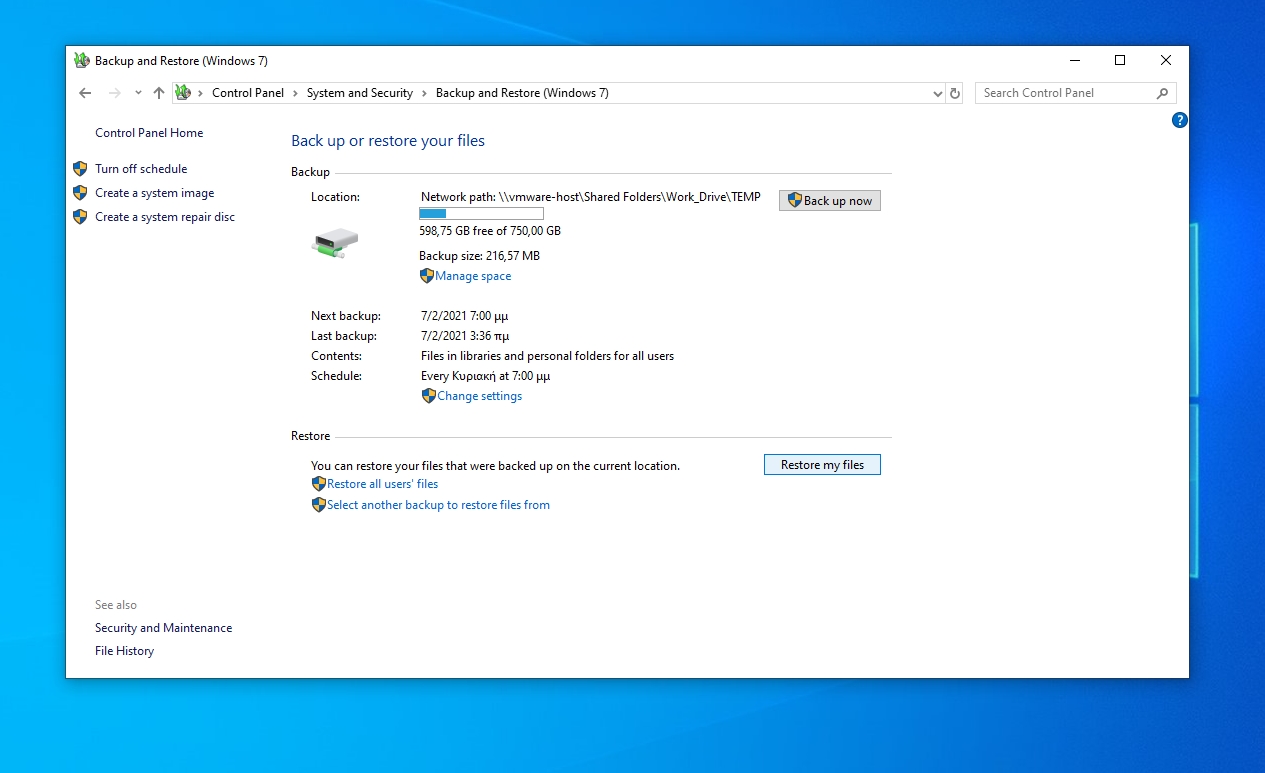
- You can choose from which backup you want to restore your files by clicking on "Choose a different date". You can also select the files and folders you want to recover using the "Search…", "Browse for files", and "Browse for folders" options on the right. You can add multiple entries to the Restore Files list.
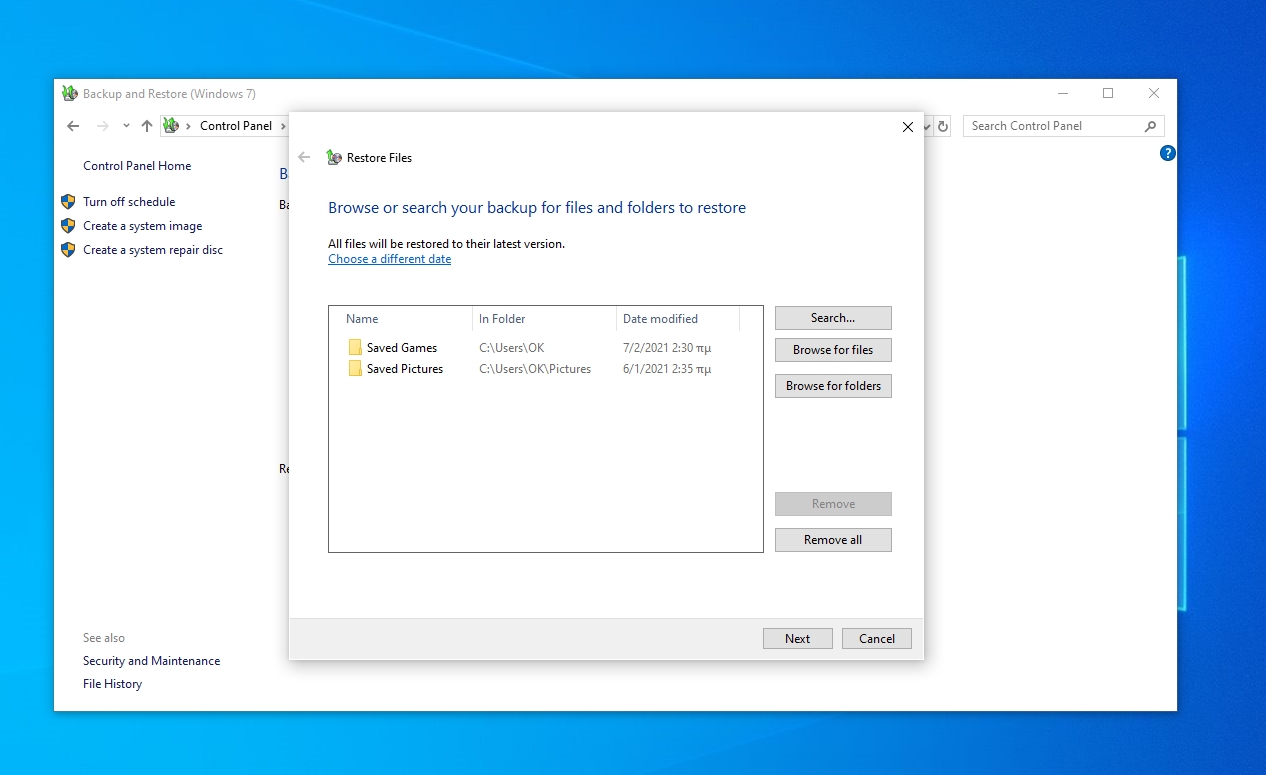
- The next step is choosing where you want to restore your files. You can have them return to their original location or choose a different folder. One final click on the "Restore" button on the bottom right of the window, and soon you will have your files back.
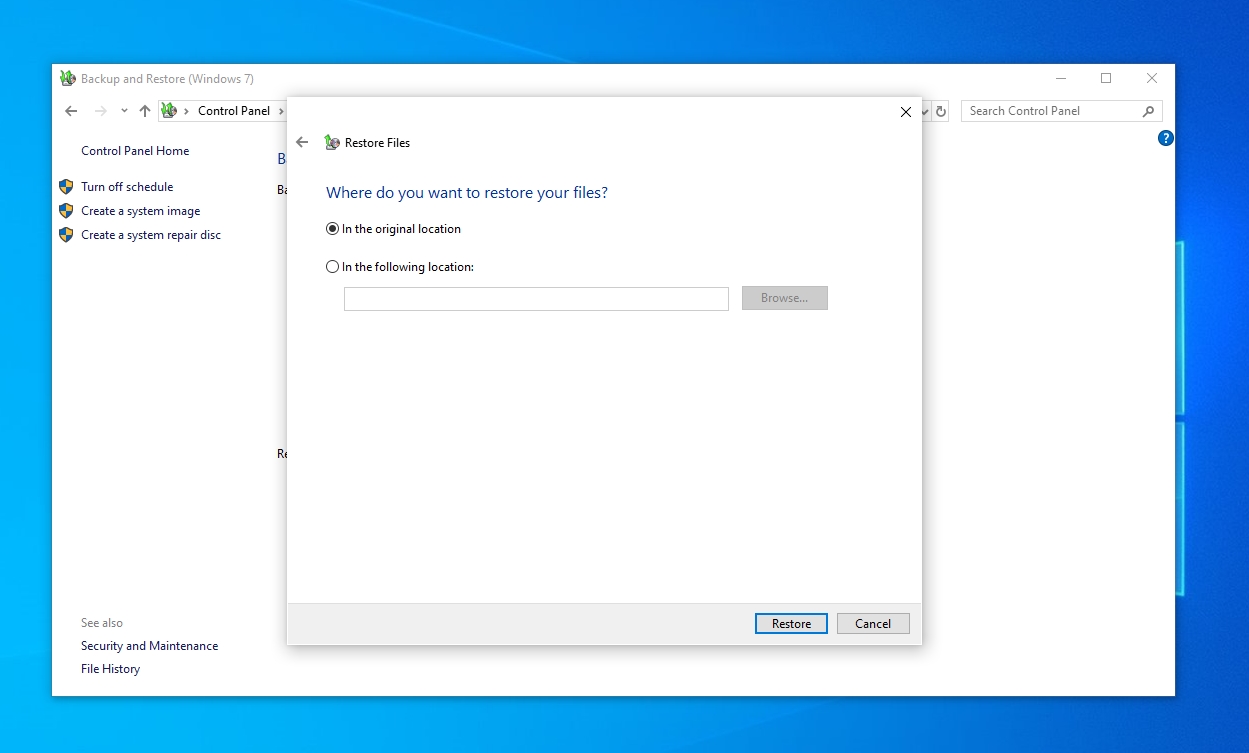
- If you chose to recover your files to their original location, you will probably meet some conflicts. "Conflicts" as in files being recovered with the same name and to the same spot as existing ones. You can have your recovered files replace the current versions ("Copy and Replace"), skip their recovery ("Don't copy"), or have them automatically renamed and keep both instances ("Copy, but keep both files").
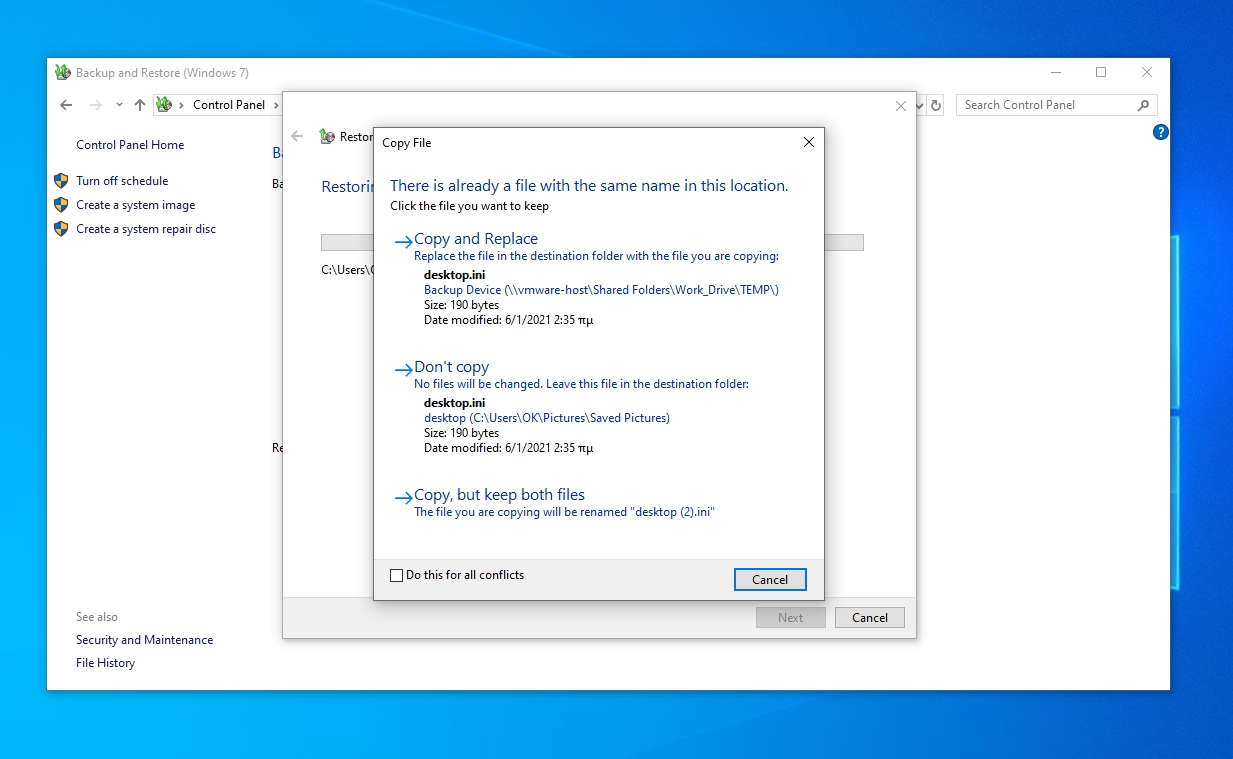
As we will see right next, if you take full system image backups frequently, you don't also have to back up your personal files individually. As long as a system image backup includes those files, even if the process is somewhat convoluted, you can extract them manually.
Method #8: Extract Lost Files on Windows 10 From a System Image Backup
All the solutions we saw up to now deal with individual files and folders, but what happens if you only have a full system image available? In such a scenario, you can "pull out" individual files and folders from it as follows:
- Fire up your favorite file manager. For most people, this means Windows Explorer. Then, point it to the location where your system image backups are stored. Enter the folder "WindowsImageBackup" that you will find there.
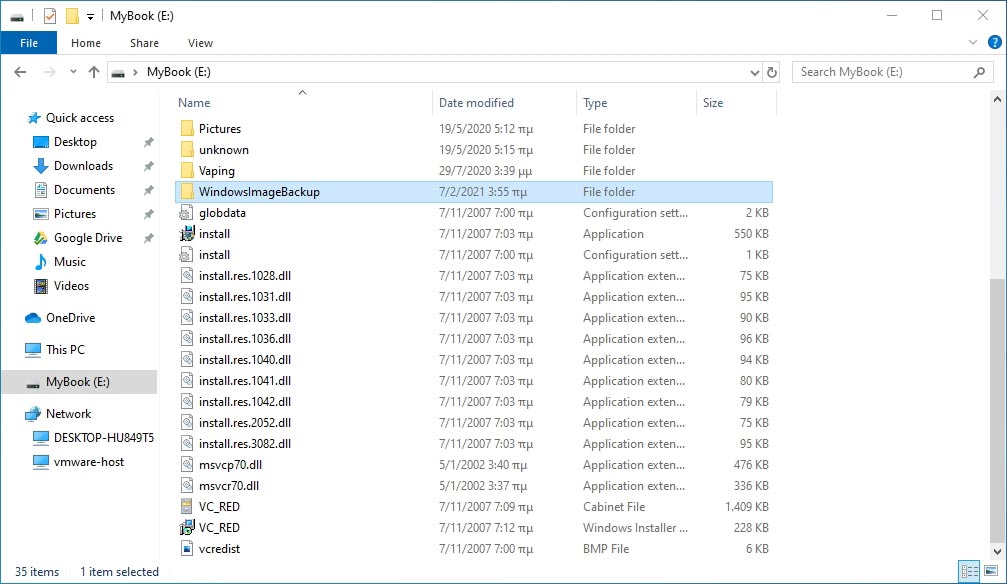
- Windows will bug you that you don't have permission to access this folder. However, you can simply click on "Continue" to proceed. Note that you will have to repeat this step for every subfolder that you are trying to access.
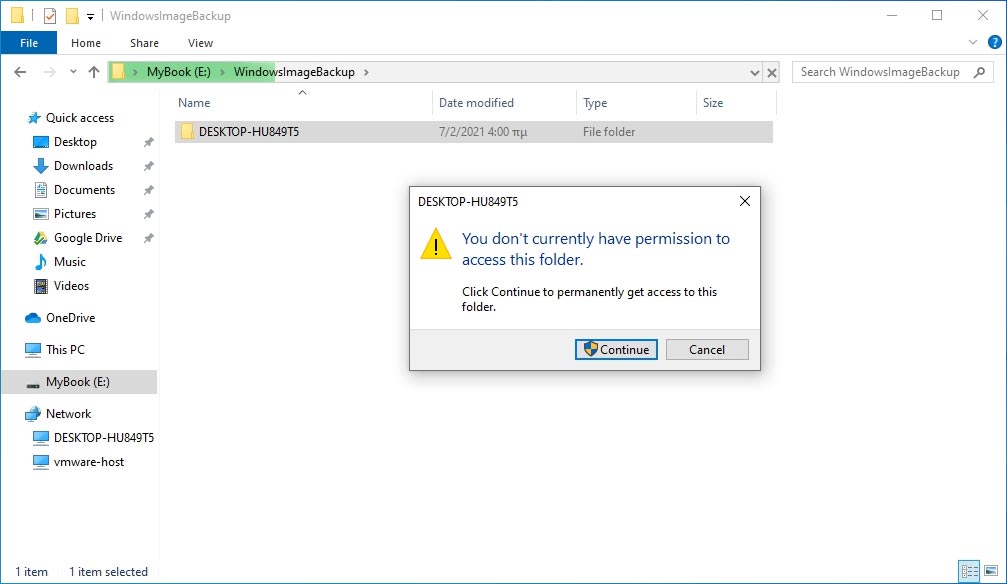
- Each system image backup will be stored in a folder with its time and date. Inside those, you will find multiple other files. Turn your attention towards the larger one, with a size close to that of your full operating system's partition. Right-click on it and choose "Mount" from the menu that shows up. This backup's contents should now be accessible from a new drive letter, from Windows Explorer, like any other drive. If they're not, move to the next step.
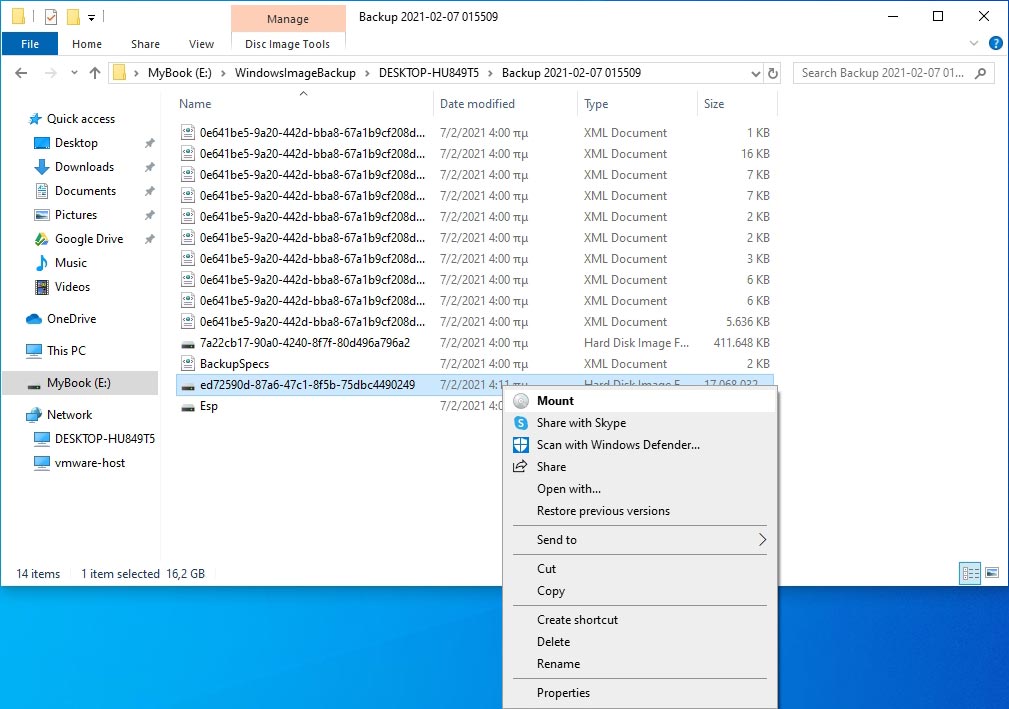
- Didn't the previous step give you access to the contents of your system image backup through Windows Explorer? Try a different approach for mounting the backup image. Click on the start button or press the Windows key on your keyboard and start typing "Disk Management". Choose that entry when it shows up. From there, click on the second menu, "Action", and choose "Attach VHD", then your backup image.
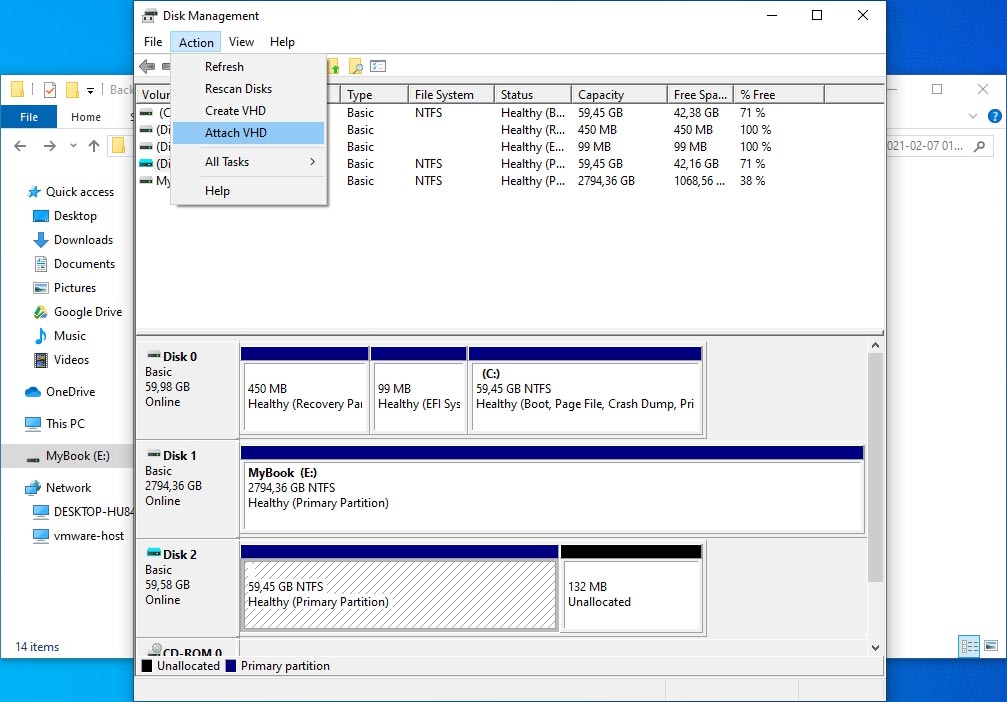
- The image file you selected will show up as another disk in Disk Management's lists. Right-click on it and choose "Change Drive Letter and Paths…", then select a drive letter that you'd like to (temporarily) assign to that image file, from where you will have access to its contents.
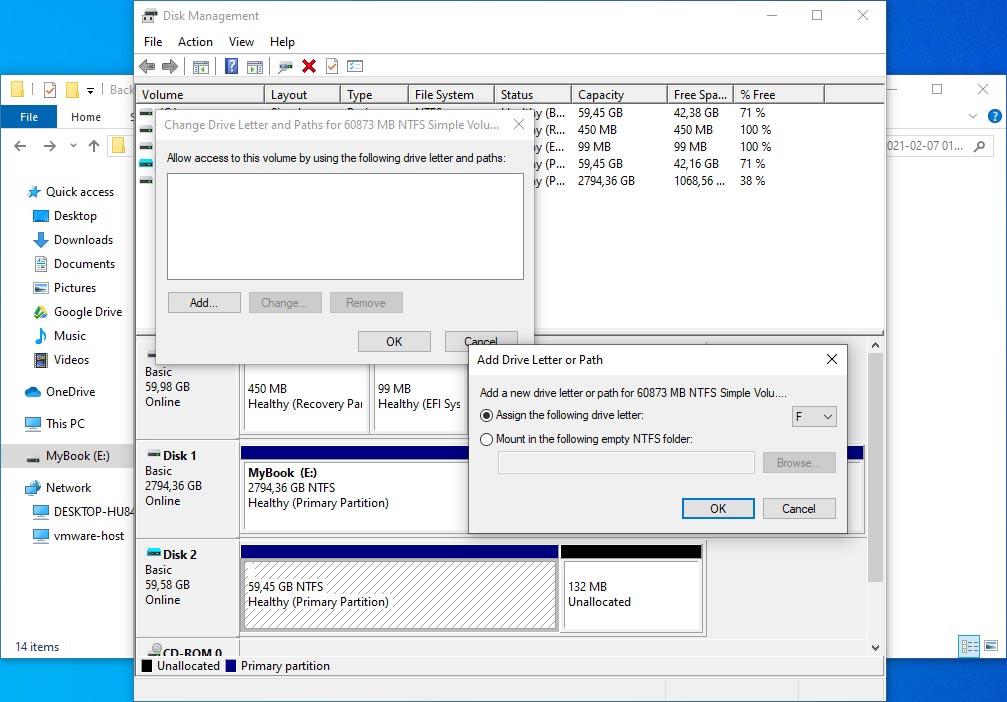
- Open your favorite file manager and visit the drive letter assigned to your image file. Inside you'll find a clone of everything in your operating system's partition from when the backup was created. You can navigate into its subfolders, locate the files you'd like to recover, and copy them anywhere you wish.
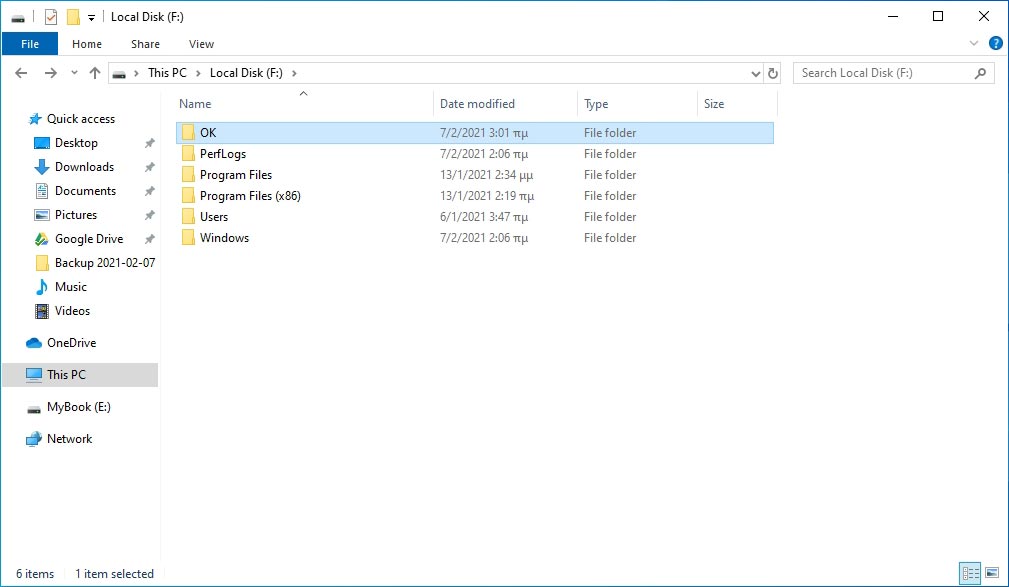
Although other approaches are more straightforward for backing-up and recovering your personal files, if you've never set one up, being able to pull your files out of a system image backup can be a lifesaver.
FAQ
The solutions we covered are the best zero-cost solutions for recovering your files. There are alternatives, but most of them more or less work in the same ways and achieve the same results.
Two of the software tools we saw, Disk Drill and Windows File Recovery, can also check a storage device that appears empty after a format, and recover files that seemed all but lost. Point them towards the media from where you want to recover files, choose their thoroughest options, and give them enough time to locate previous filesystem structures from where they might manage to fish out your files.
Proper recovery tools need direct access to your storage. That isn't possible through online apps for both technical and security reasons. The "technical" bit is that this would demand the exchange of insanely huge amounts of data between your computer and a remote server. The process would be slow, resource-intensive, and economically unfeasible. More importantly, though, you'd be sending your whole storage device's contents to a third party. Would you trust them with data ranging from notes and family photos to your browsing history and stored passwords? That's why if someone offers you a magical online solution for recovering your lost data with a single click, you should run the other way.
Be Prepared: The Best Way to Deal With Lost Files on Windows 10 (and Any Other OS)
Unfortunately, the web is filled with misinformation on how to recover deleted files on Windows 10. Misinformation which can even lead to further data loss. Thankfully, the solutions we saw can help you recover all your lost files on Windows 10. They're tried, tested, and guaranteed to work.
However, we'll repeat that the best solution for such disasters is being prepared. When you eventually get your files back and have your operating system in order, make sure to set up a backup solution if you hadn't already. And keep a recovery tool like Disk Drill, or Windows File Recovery installed and ready. You never know when it will come in handy.
How to Backup Deleted Files in Windows 10
Source: https://www.handyrecovery.com/recover-deleted-files-in-windows-10/
0 Response to "How to Backup Deleted Files in Windows 10"
Post a Comment